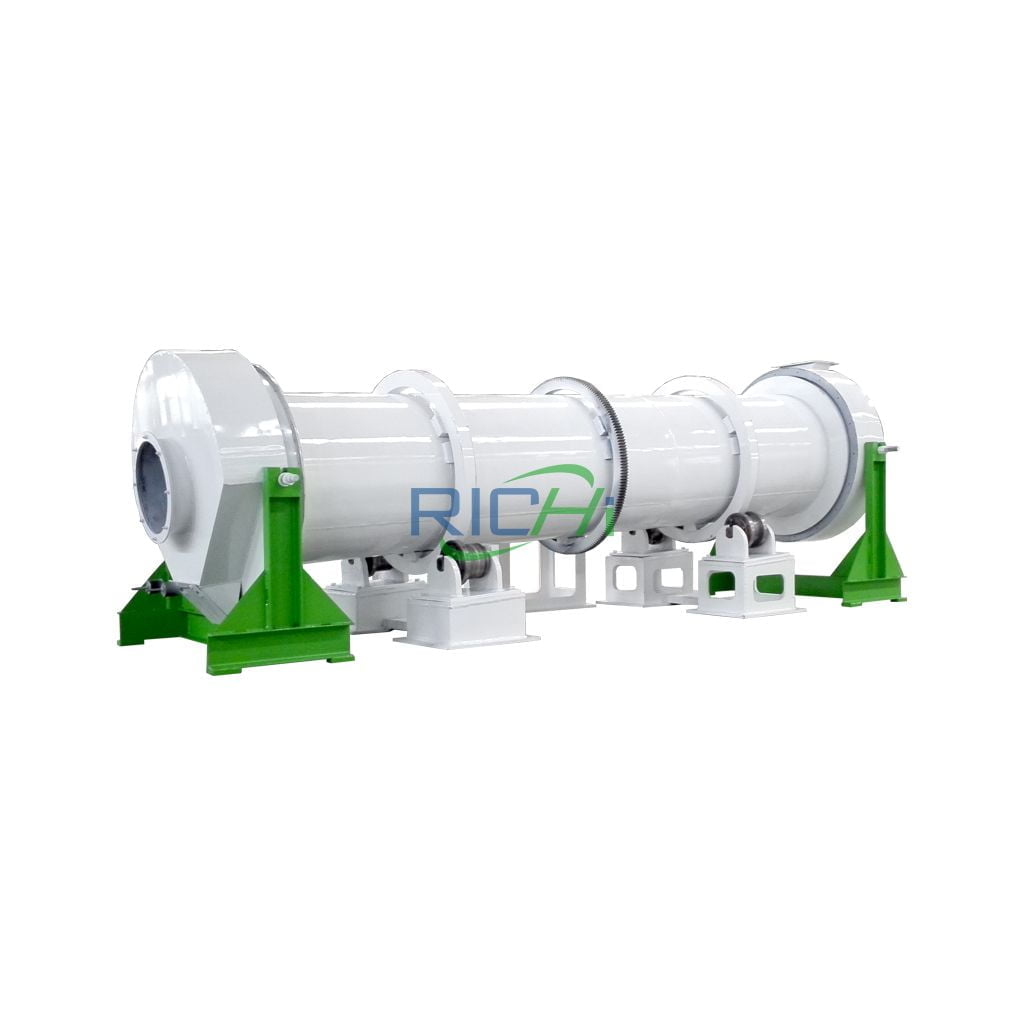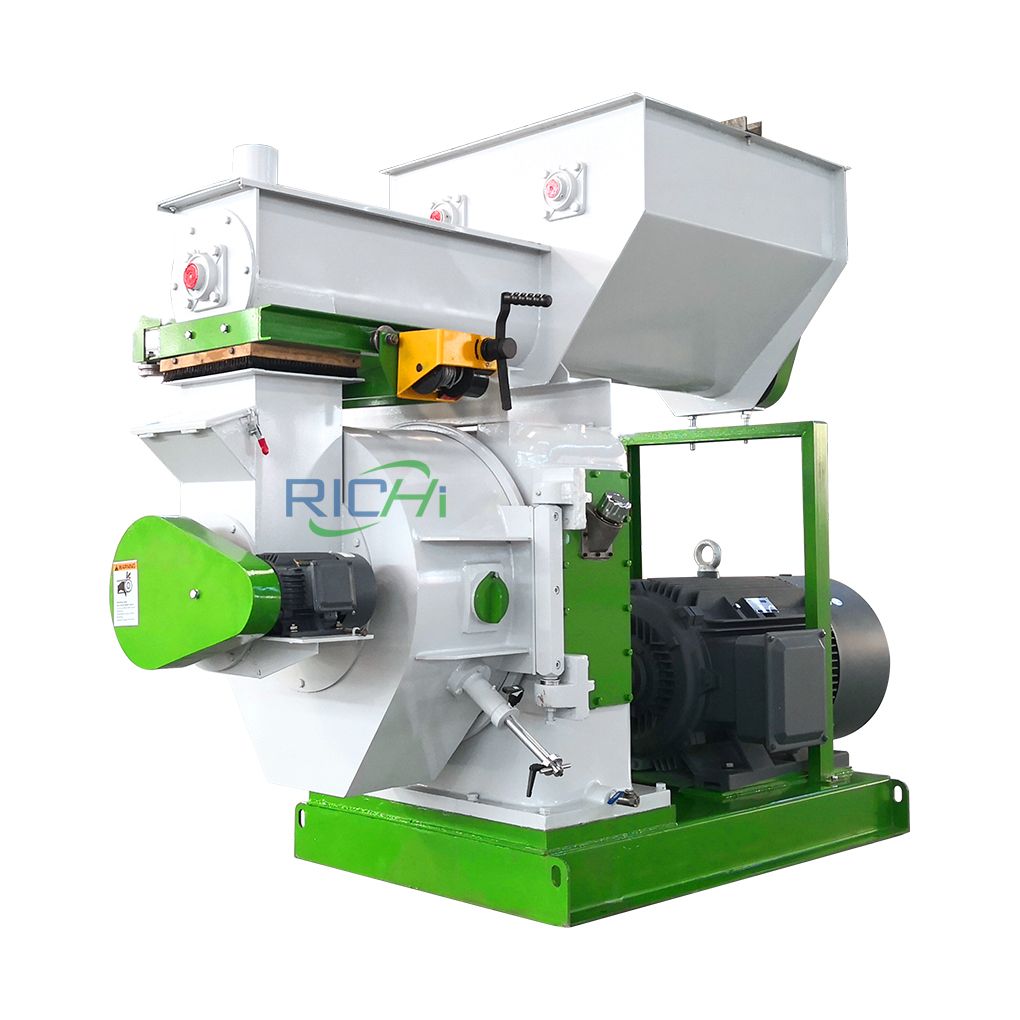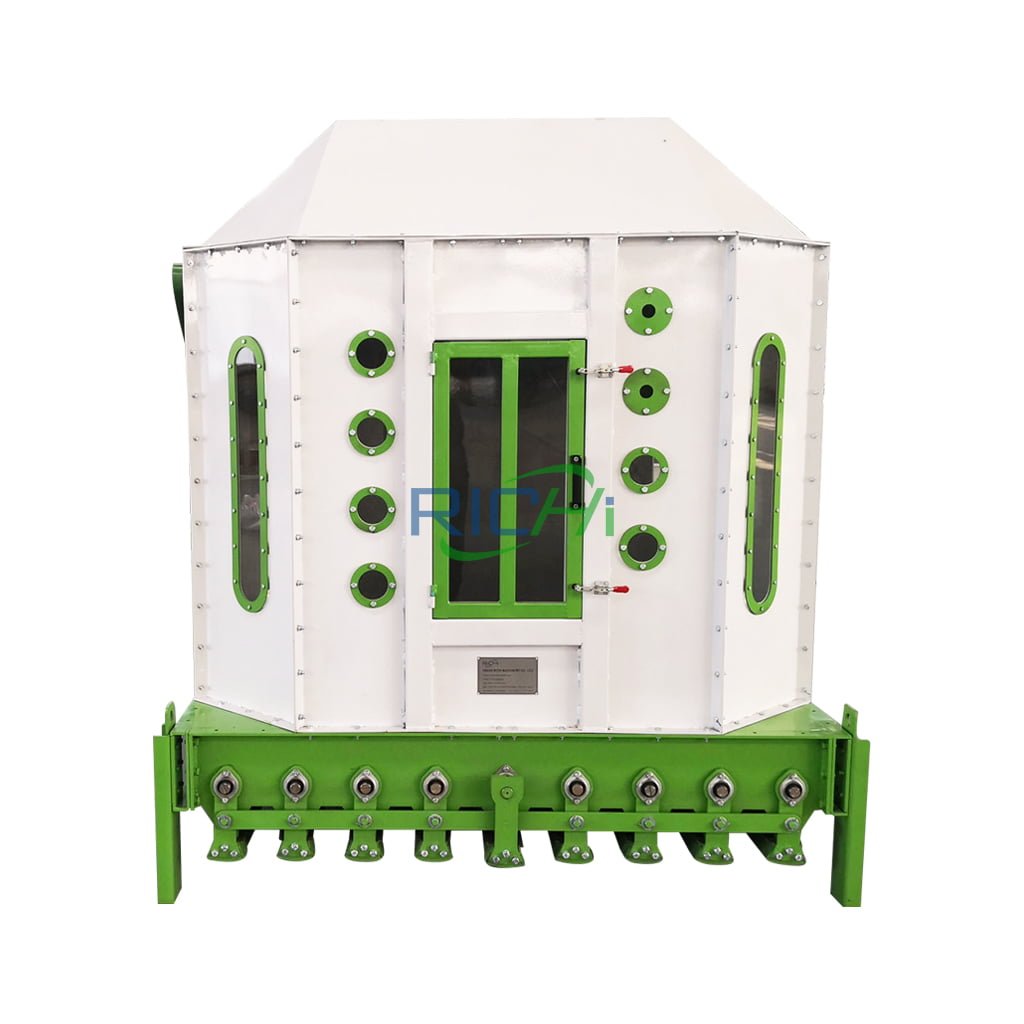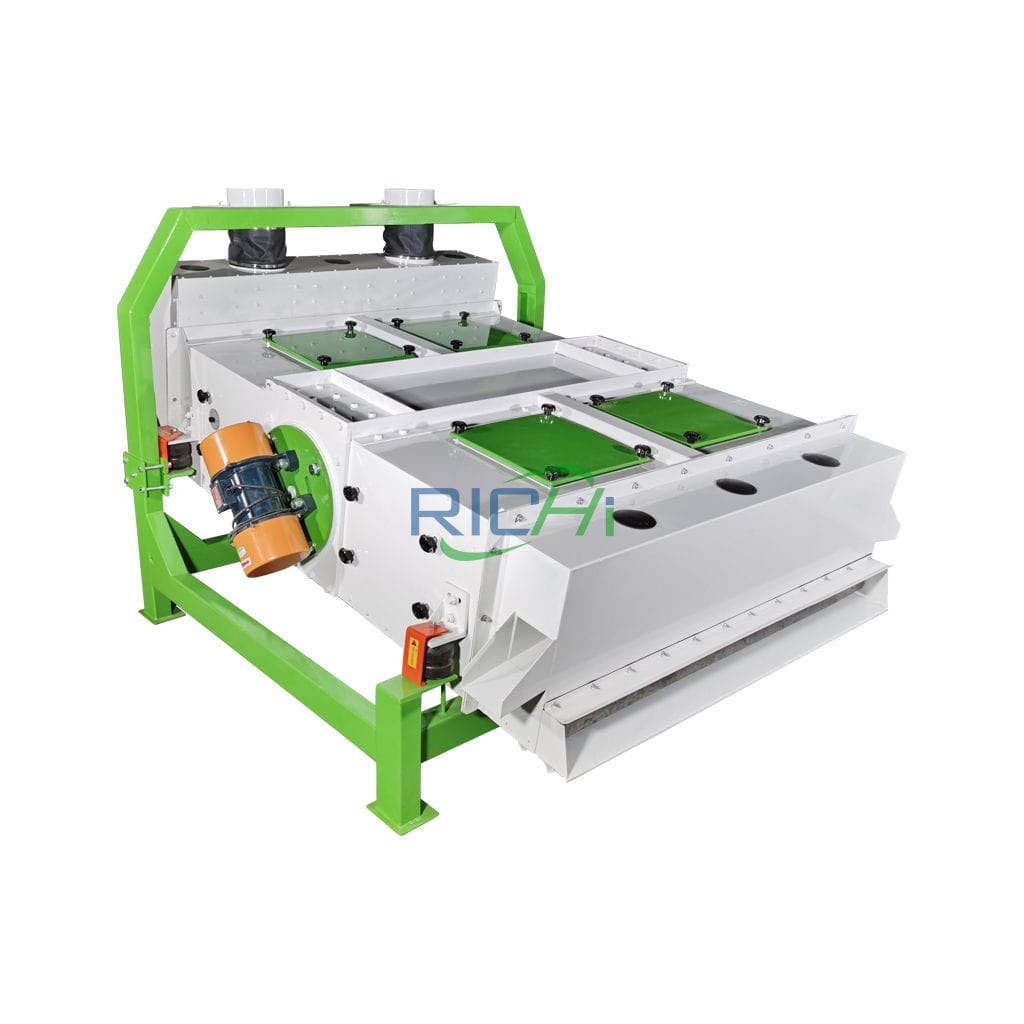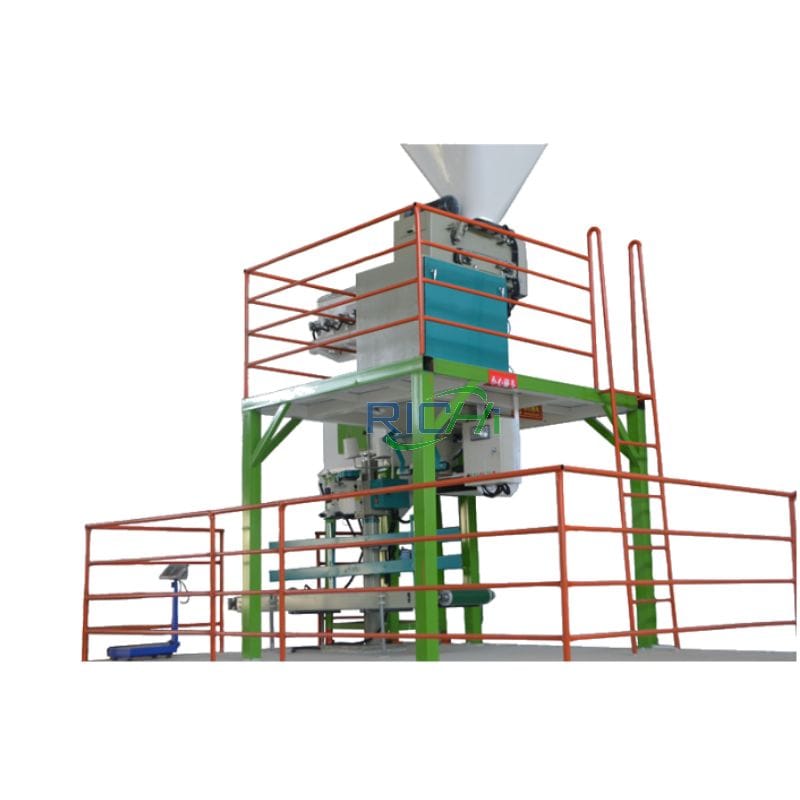
Biomass Fuel Pellet Machine
Biomass fuel pellet machine is a ring die pelletizing equipment that uses straw, rice husk, peanut shell, melon seed shell, bamboo chips, bagasse, palm shell, branches, branches, bark, leaves, wood scraps, sawdust and other agricultural and forestry waste as raw materials, and processes them into renewable fuel pellets, biomass feed pellets, and biomass organic fertilizer pellets.
- Model: MZLH520
- Capacity: 2-15T/H
- Power: 132KW
- Price:40,000 – 60,000 USD FOB
- Application: biomass fuel pellets co ltd, etc.
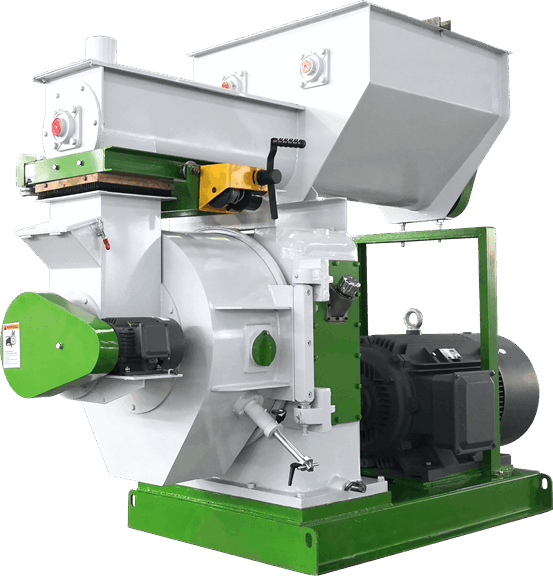
Its strength and reliability made MZLH520 the most successful model until the market turned towards larger presses. It can handle motor power up to 132 kW. It is the heaviest model in the series and its use is therefore limited to extremely difficult work such as wood sawdust, fertilizers, alfalfa, etc.
The pellet fuel after biomass pellet molding is a new type of bioenergy, which can replace firewood, raw coal, fuel oil, liquefied gas, etc., and can also be used as pellet feed. The biofuel pellet machine is widely used in heating, household stoves, hot water boilers, industrial boilers, biomass power plants, feed mills, farms, etc.
Technical features of biomass fuel pellet machine
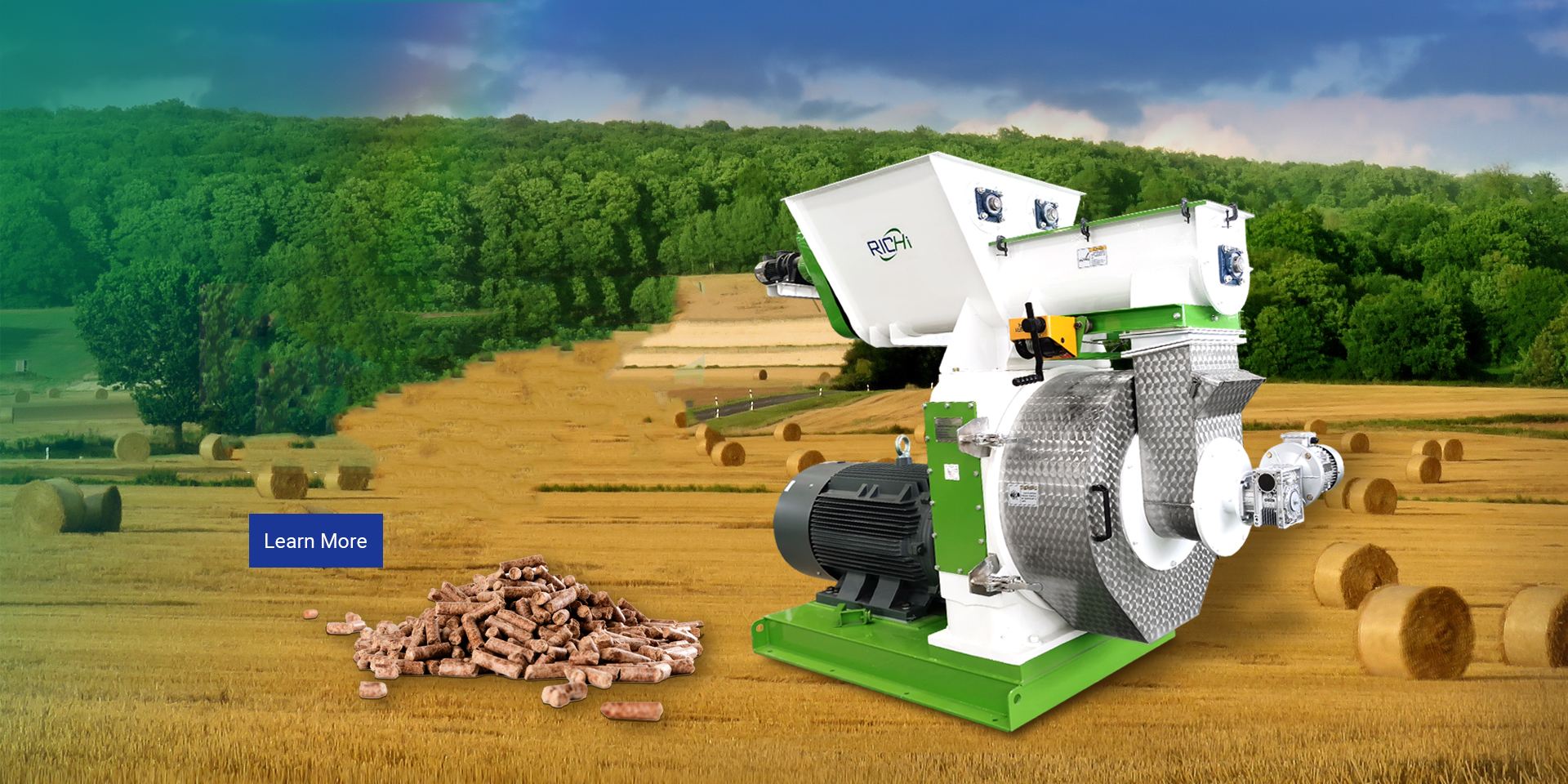
- The main drive adopts gear drive, and the ring die adopts quick-release clamp type, and the output is about 20% higher than that of belt drive type.
- The transmission part of the whole machine uses high-quality imported bearings to ensure efficient, stable and low-noise transmission.
- The internationally advanced level of compensation type serpentine spring coupling has novel structure, compactness, safety and low fault performance.
- On the basis of the traditional biofuel pellet machine, the working intensity of the main working parts is strengthened from the material, heat treatment and other processes to meet the pelletizing requirements of biomass pellets. Due to the increased material requirements, the whole machine is more than 1 ton heavier than other peer manufacturers.
- The biomass fuel pellet machine has made a major breakthrough in the ring die, which mainly improves the anti-cracking, high output and long service life of the ring die.
- High efficiency, low energy consumption, smooth operation, stable and reliable pellet quality.
- Its die is annular, and the roller and die are combined in an embedded manner. After the raw material enters the ring die, it is extruded between the roller and the ring die, and extruded from the aperture on the ring die.
- The ring die and roller are made of high-strength forgings, and the holes are drilled automatically with gun drilling and vacuum quenching heat treatment. The working life of the ring die is >500 hours.
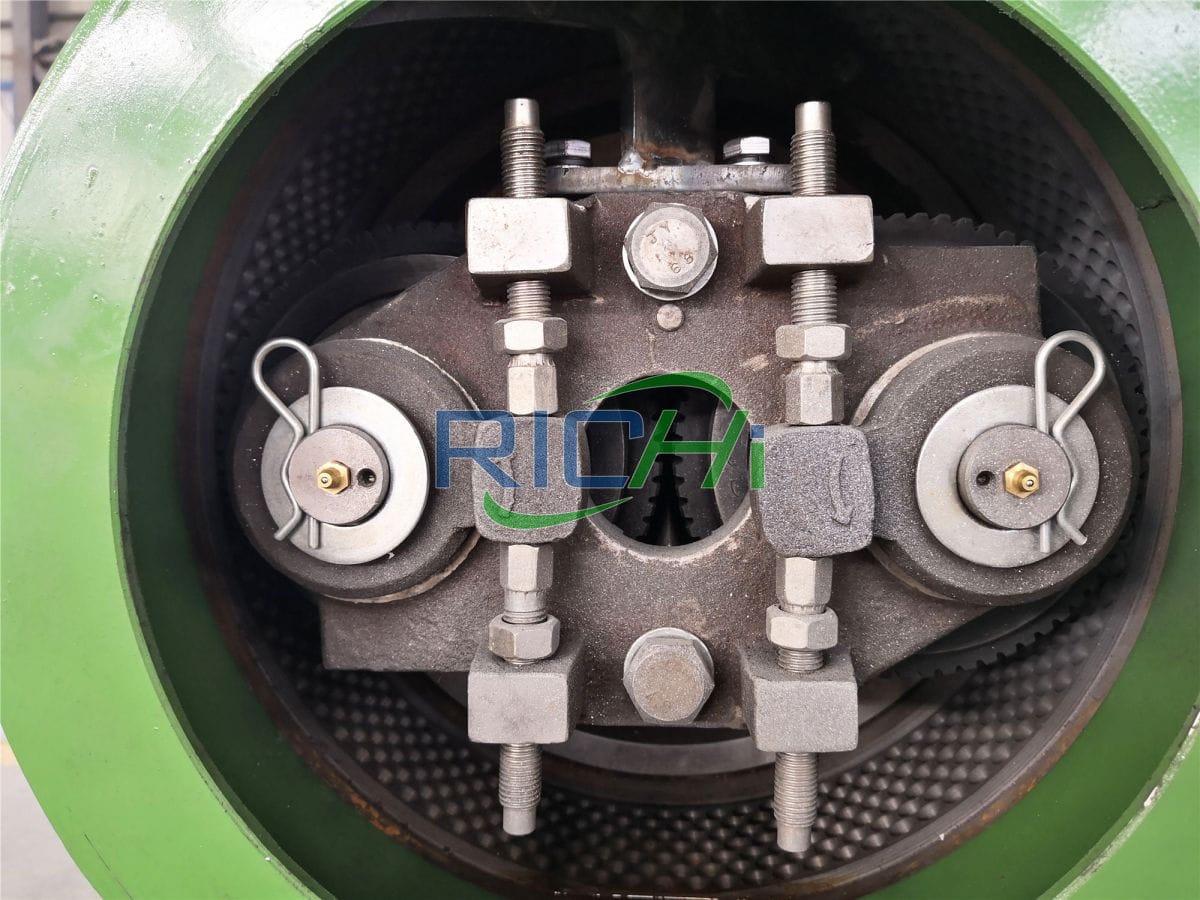
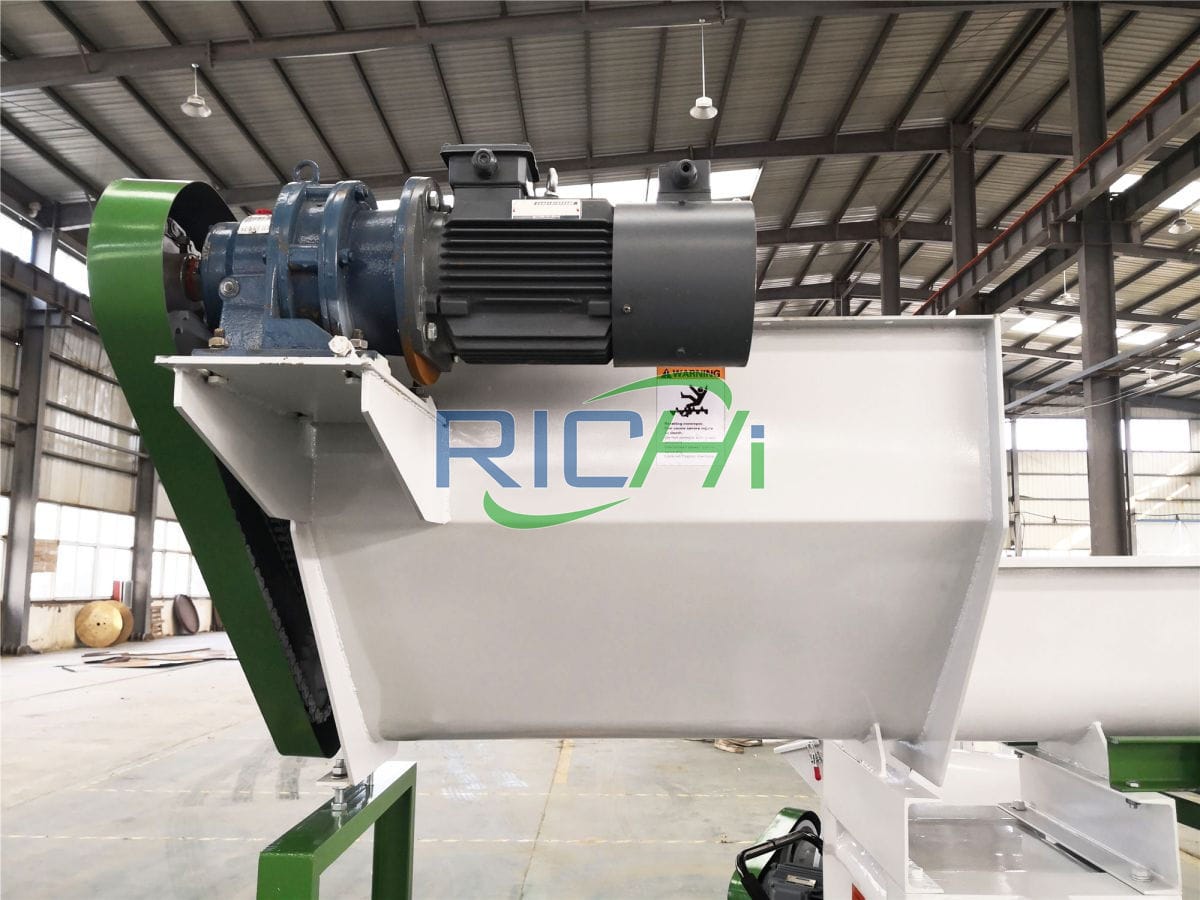
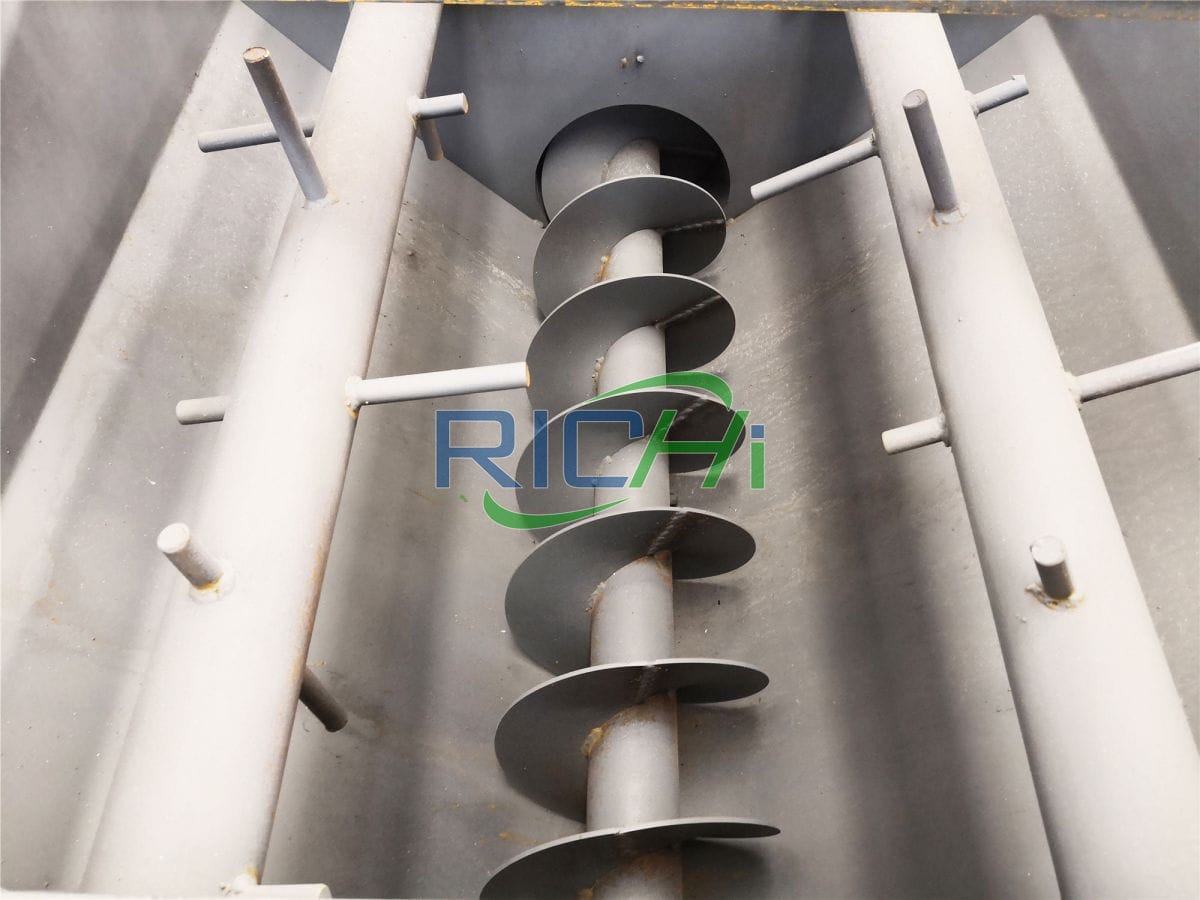
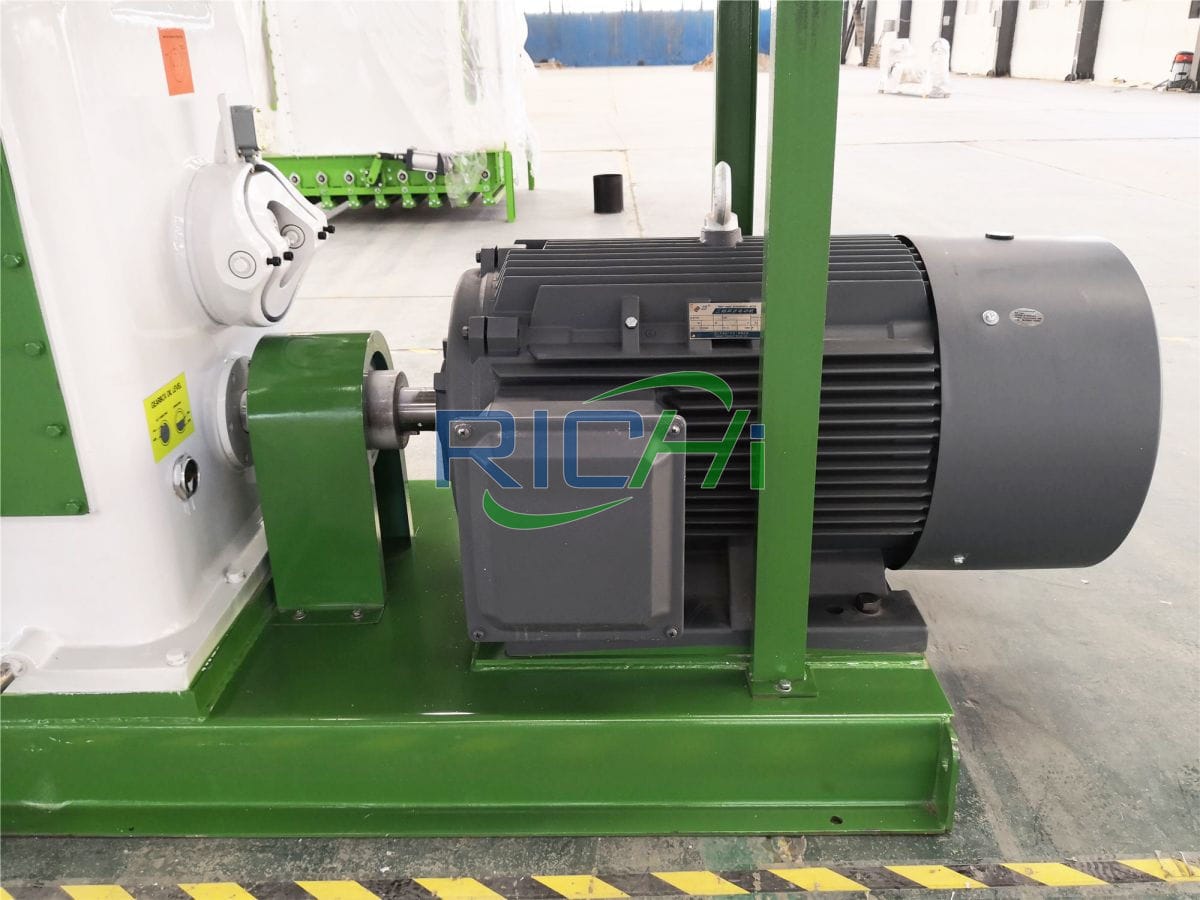
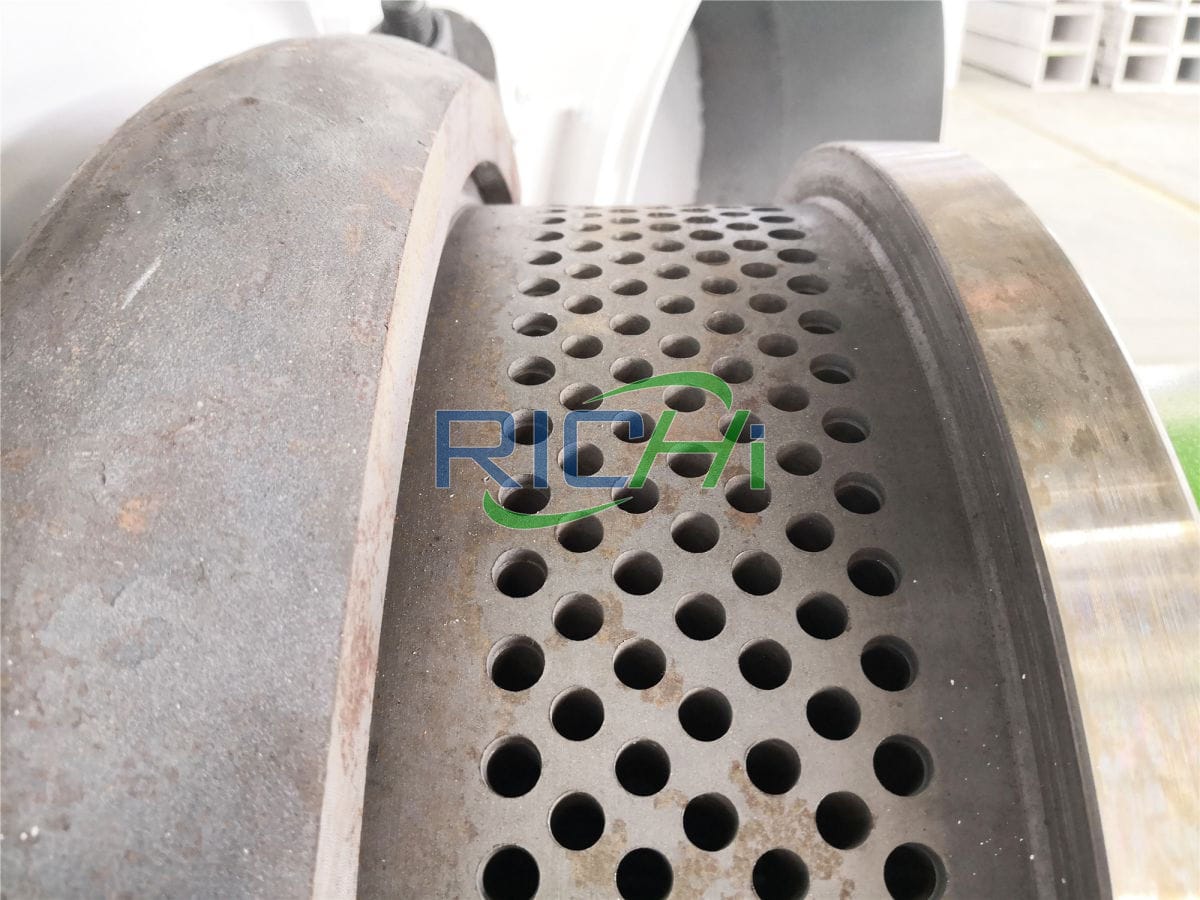
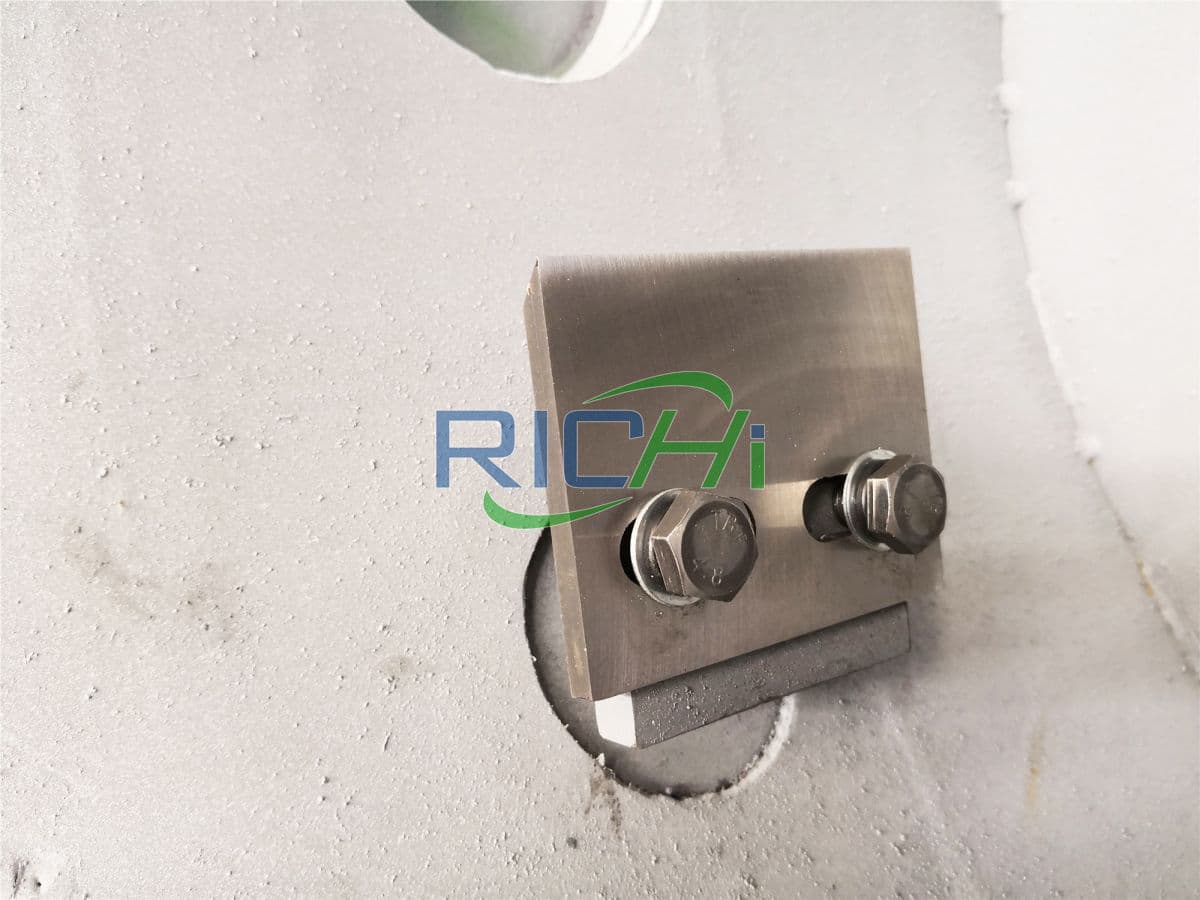
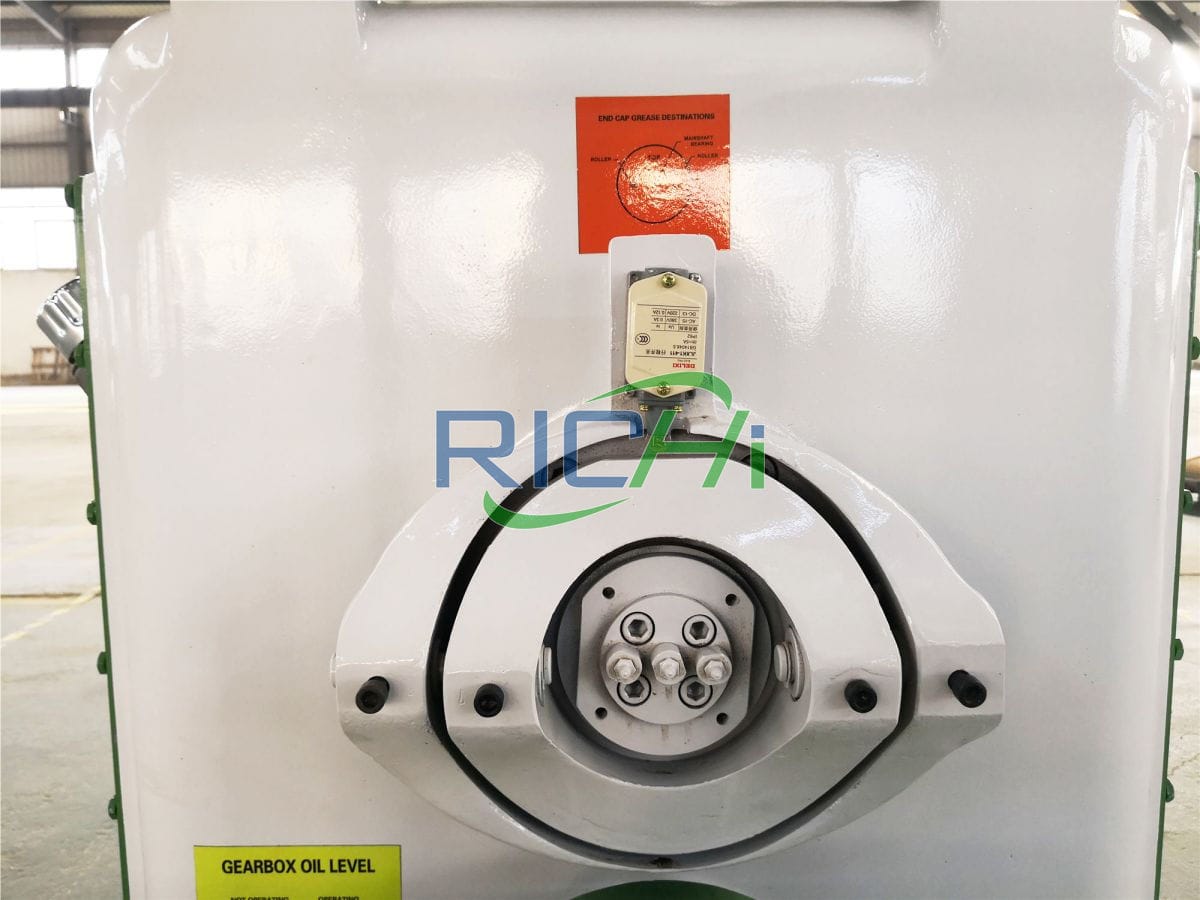
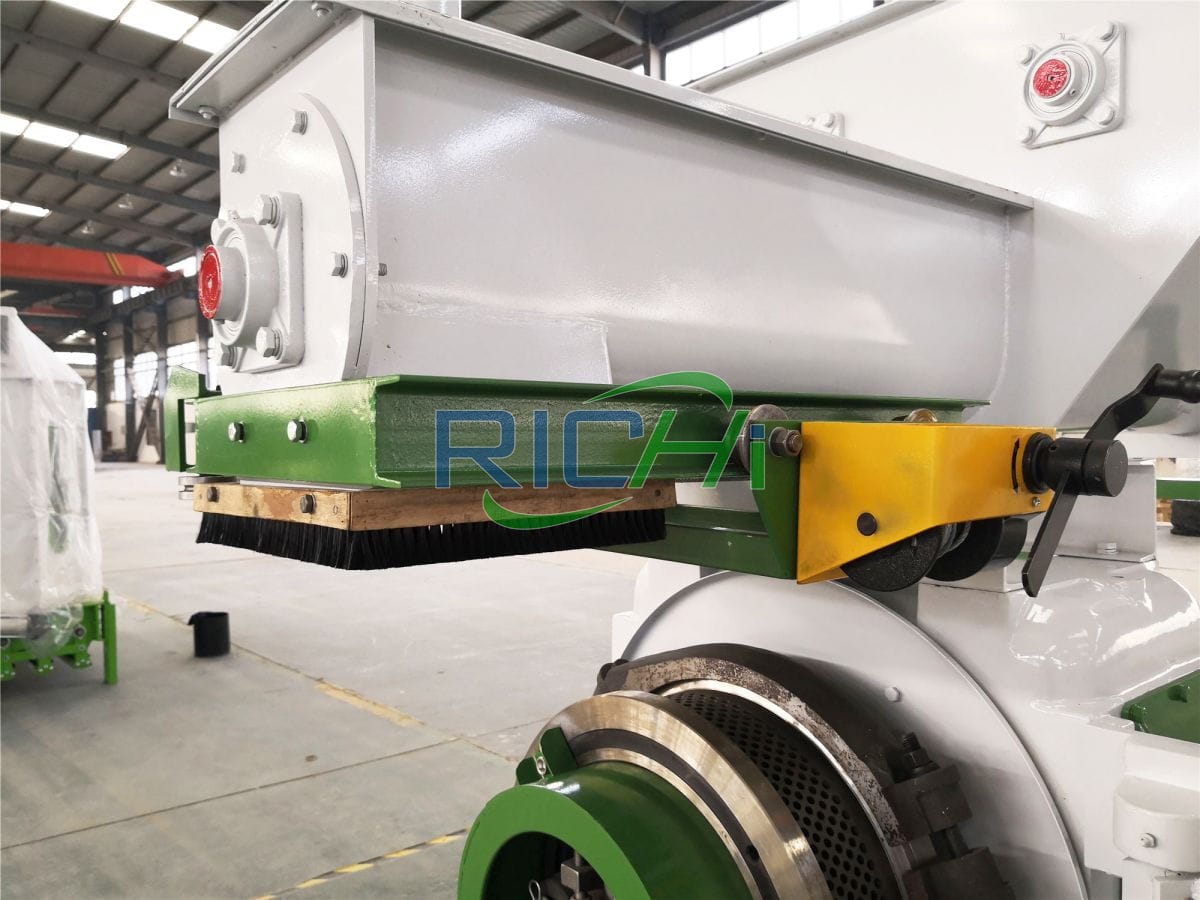
Advantages of biomass fuel pellet machine
- The method of compact molding at room temperature is adopted. The friction heat generated during the extrusion molding of the material can soften and bond the material;
- The requirements for the moisture content of the raw materials are relatively wide;
- High production efficiency, greatly improved output, relatively good product quality, uniform product particle size and high density;
- Low energy consumption cost;
- Small equipment size, simple and practical design;
- No binder is added, which effectively reduces production costs and makes the product more natural and environmentally friendly.
Working principle of biomass fuel pellet machine
The crushed biomass wood material enters the die cover by the forced feeding mechanism, and is fed evenly into the two pressing areas in the ring die, that is, the wedge-shaped space formed by the two rollers and the ring die, through the centrifugal force generated by the feeding device and the rotation of the ring die and the action of the feeding scraper.
Under the strong extrusion of the ring die and the roller, the material is gradually compacted, squeezed into the die hole of the ring die and formed in the die hole.
Since the extrusion of the material between the ring die and the pressure roller is continuous, the formed material is continuously discharged from the die hole in a columnar shape and then cut into biofuel pellets of the required length by the cutter.
Technical specifications of biomass fuel pellet machine
| Type | MZLH520 |
| Output(t/h) | 2~15 |
| Main motor power(kw) | 132 |
| Main motor series | 6/8P |
| Forced Feeder (KW) | 1.5 |
| Conditioner Power(kw)(Optional) | 7.5 |
| Ring die diameter (mm) | 520 |
| Finished pellet diameter (mm) | 2-12mm |
Configuration of biomass fuel pellet machine
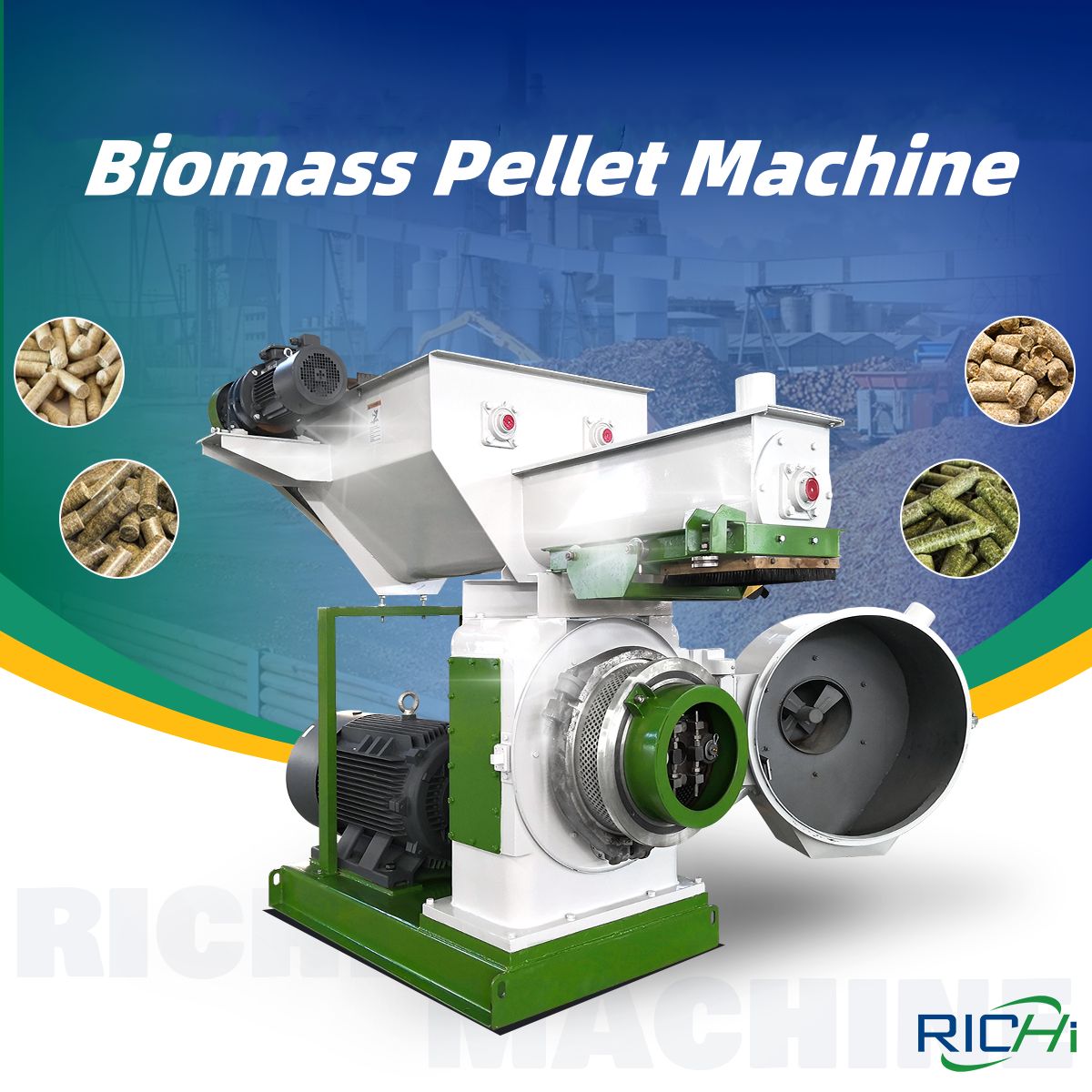
- Ring die material: 42CrMo
- Stainless steel feeder: with anti-caking function
- Door of pelleting room: 6mm /SUS304
- Forced feeding: Worm gear reducer
- Gear box: HT250
- Gear: 42CrMo
- Gear shaft: 42CrMo
- Spindle: 42CrMo
- Empty shaft: 42CrMo
- Bearings: The gear shaft and main shaft bearings are SKF, and the pressure roller bearings are domestic high-quality bearings
- Oil seal: Germany/Taiwan
- Overload mechanical protection: safety pin
- Serpentine spring coupling drive
- Lubrication system: Configurable automatic oil injection system
biomass fuel pellet machine projects
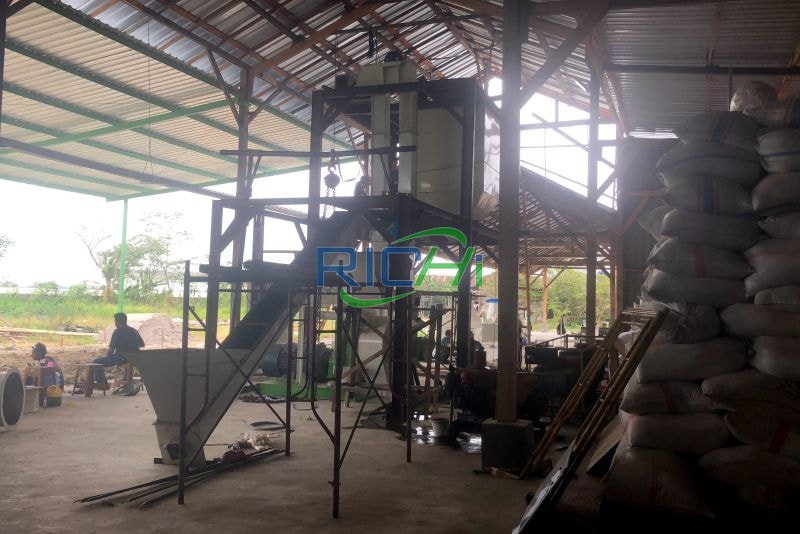
biomass fuel pellet machine In Vietnam
- pellet machine selection: MZLH520
- Production: 8000 t/a
- Ingredients: wet corn Straw waste
- biomass pellet project cost: 180,000 USD
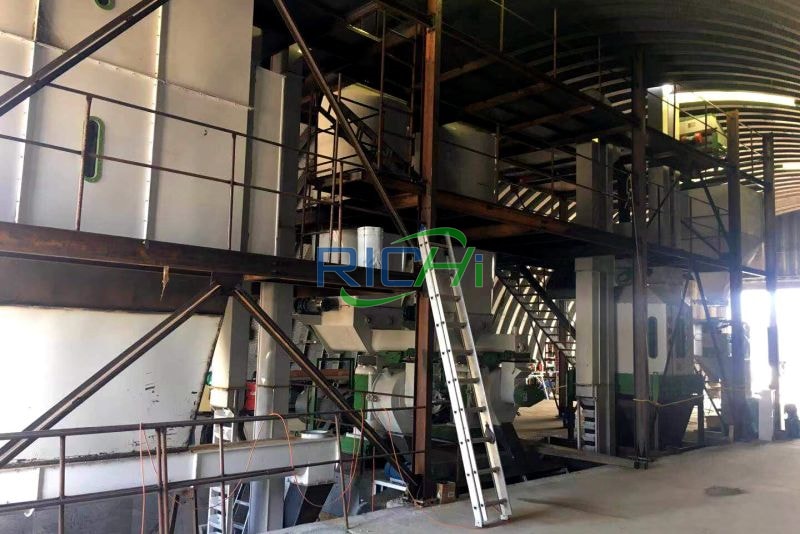
biofuel pellet machine In India
- pellet machine selection: MZLH520
- Production: 10,000 T/A
- Ingredients: bamboo, rice husk
- biomass pellet project cost: US$270,000
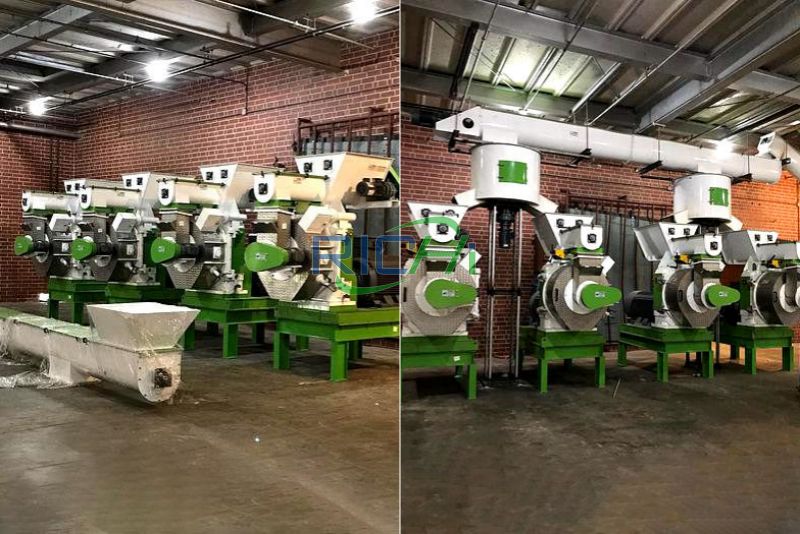
bio pellet machine In United States
- pellet machine selection: MZLH520
- Production: 50,000 T/A
- Ingredients: Miscanthus, Hay, flax straw
- biomass pellet project cost: US$550,000
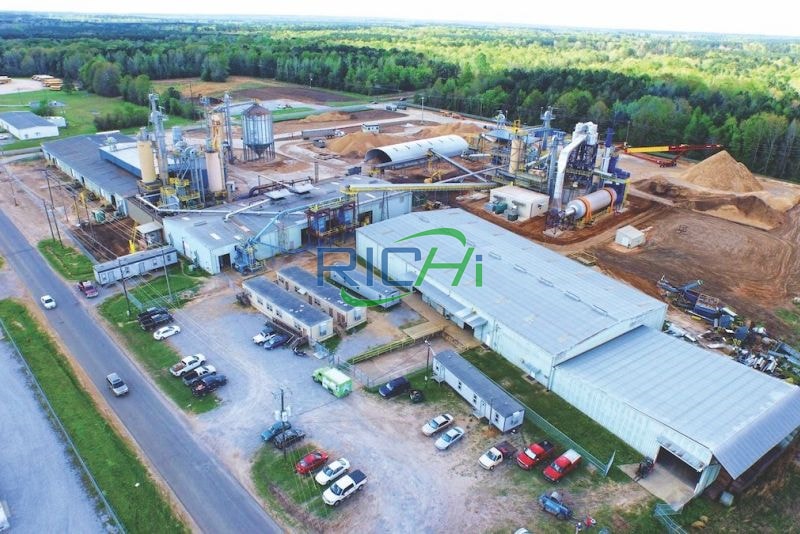
bio fuel machines In germany
- pellet machine selection: MZLH520
- Production: 35,000 T/A
- Ingredients: palm waste, straw, husk, wood waste
- biomass pellet project cost: 410,000 USD
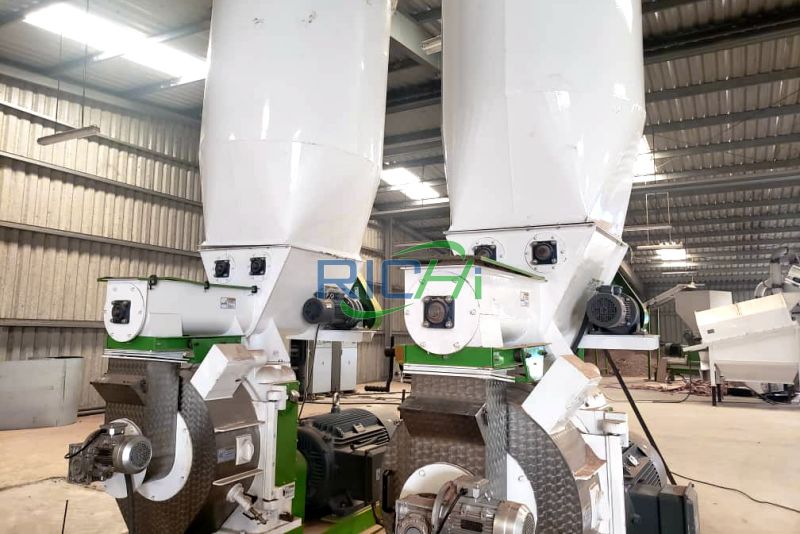
biofuel pellet mill In indonesia
- pellet machine selection: MZLH520
- Production: 10,000 T/A
- Ingredients: palm waste, Sawdust
- biomass pellet project cost: 190,000 USD
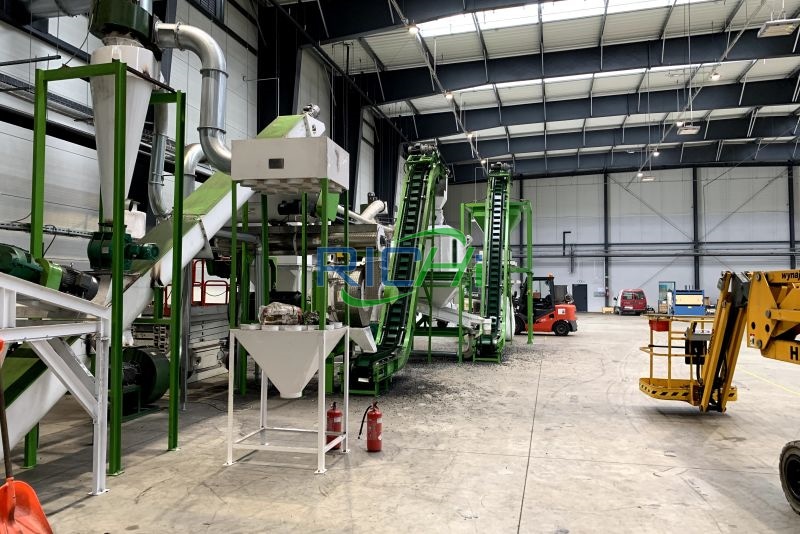
bio fuel machines In poland
- pellet machine selection: MZLH520
- Production: 55,000 T/A
- Ingredients: Peanut shells, straw, rice husks
- biomass pellet project cost: 370,000 USD
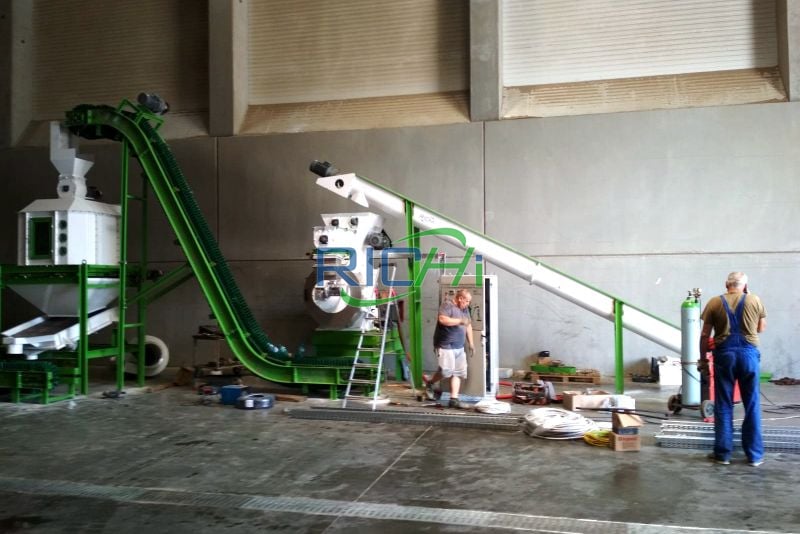
bio pellet machine In canada
- pellet machine selection: MZLH520
- Production: 6,000 T/A
- Ingredients: Straw, hay, Sawdust, blocks, planks
- biomass pellet project cost: $160,000
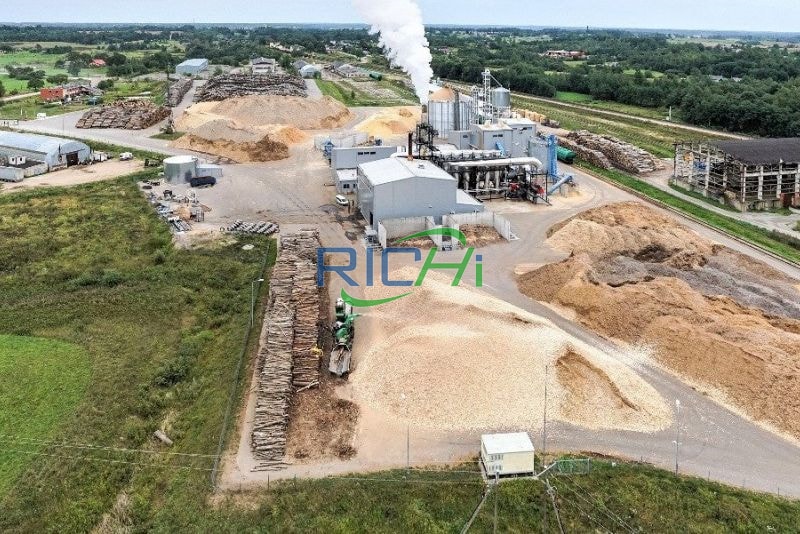
biomass fuel pellet machine In romania
- pellet machine selection: MZLH520
- Production: 30,000 T/A
- Ingredients: cotton stalk, sawdust
- biomass pellet project cost: $785,000 USD
How to process biomass pellets with complete biofuel pellet machine plant?
The production process of biomass pellets produced by ring die compression consists of cleaning, crushing, drying, pelletizing, cooling, screening, and packaging systems.
The process flow of complete biofuel pellet machine plant mainly includes raw material processing, crushing, drying, granulation and packaging.
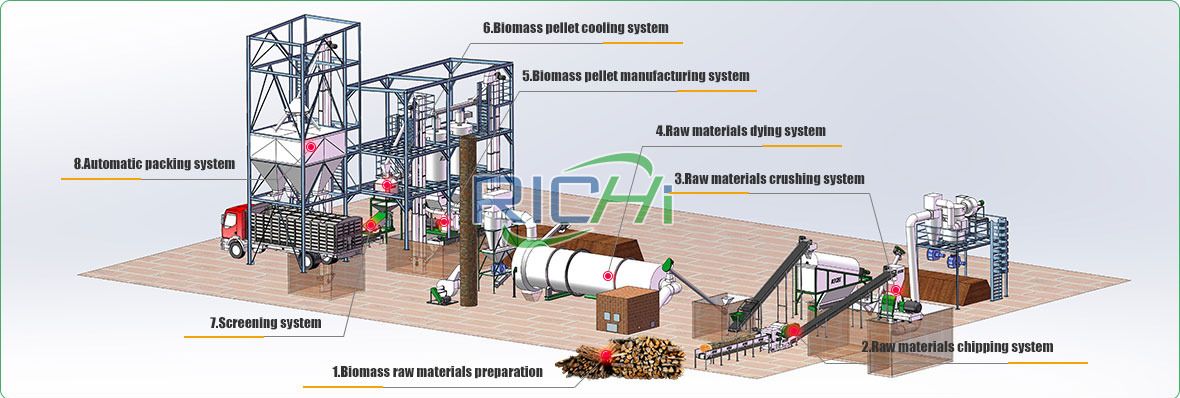
- Raw material processing:
The collected biomass raw materials, such as wood, straw, etc., are pre-treated by impurity removal, shearing or shredding to remove impurities for subsequent processing. - Crushing:
The pre-treated raw materials are sent to the crusher, and after crushing, pulverizing and other operations, the raw materials are further refined into smaller particles to improve the uniformity and operability of the particles. - Drying:
In the drying equipment, the granular raw materials are dried to remove moisture from the raw materials and improve the combustion efficiency and quality stability of the pellets. - Granulation:
The dried raw materials enter the biomass fuel pellet machine, and the raw materials are formed into regular granular materials by extrusion, pressing and other methods under high temperature and high pressure. - Cooling:
The granulated biofuel pellets are cooled by the cooling device to prevent the biofuel pellets from absorbing moisture during packaging and storage. - Screening:
The cooled bio fuel pellets enter the screening device and are screened through screens of different particle sizes to separate biofuel pellets that meet the requirements. - Packaging:
The screened biofuel pellets are packaged through an automatic packaging machine, generally in woven bags or plastic bags for storage and transportation.
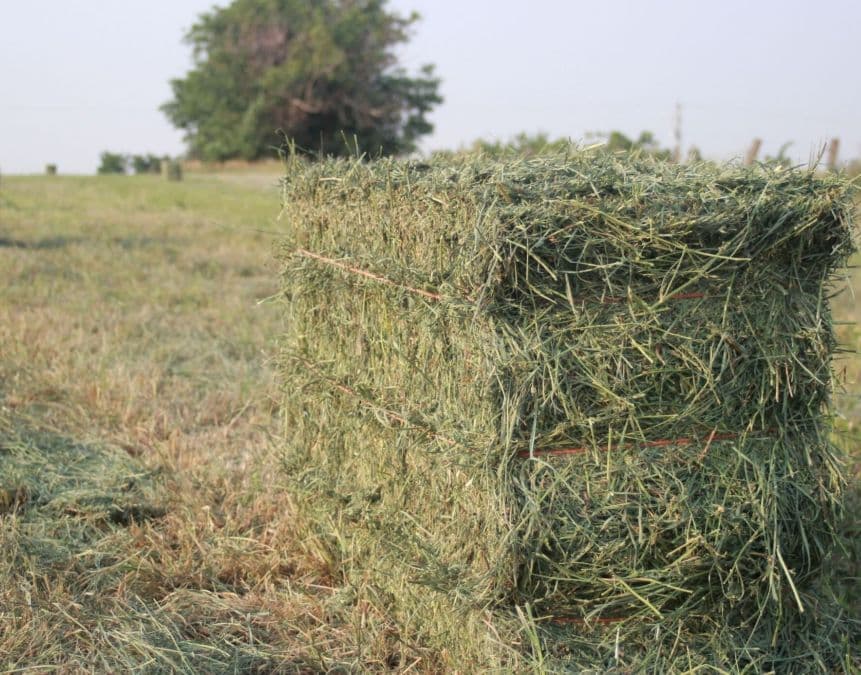
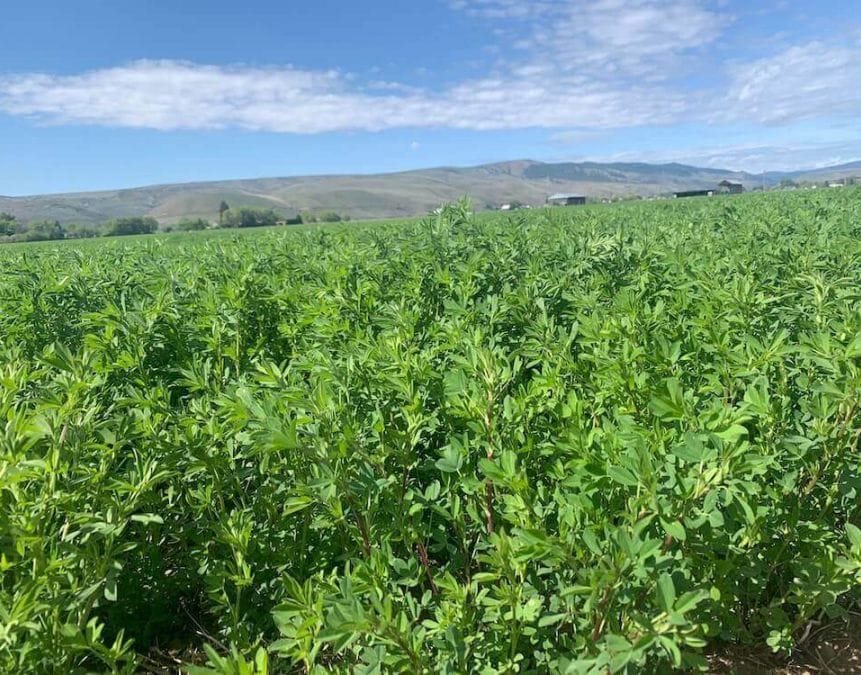
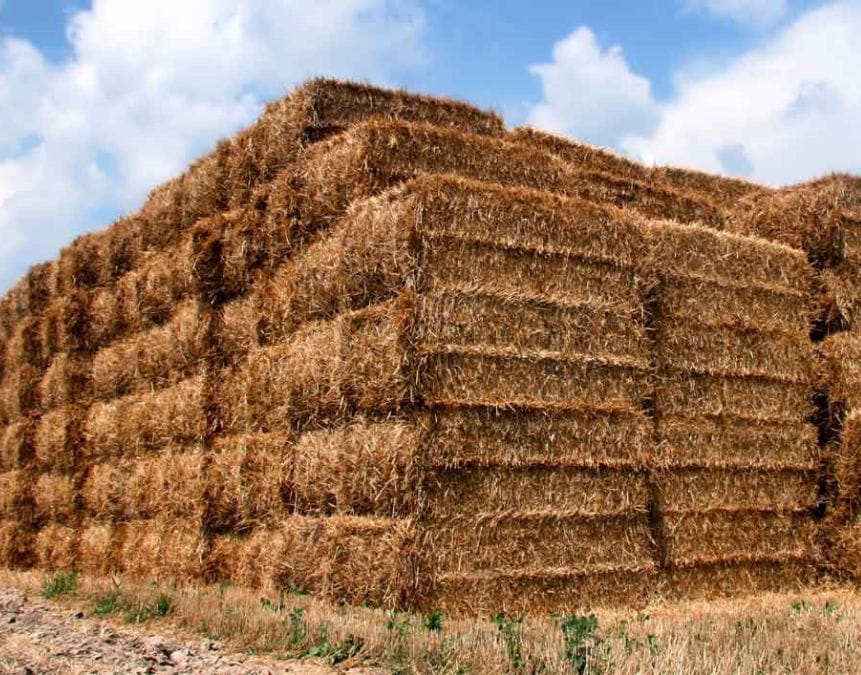
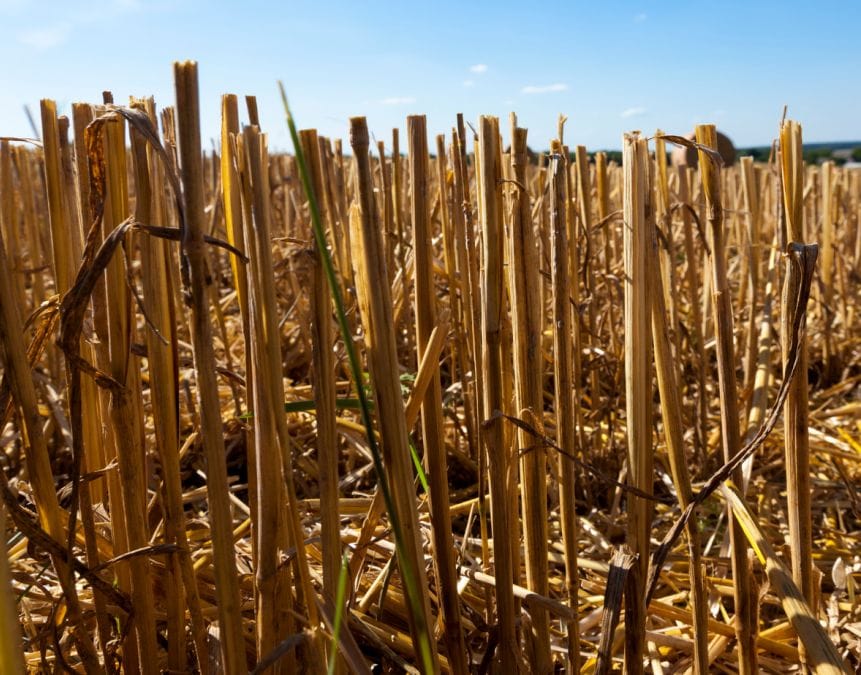
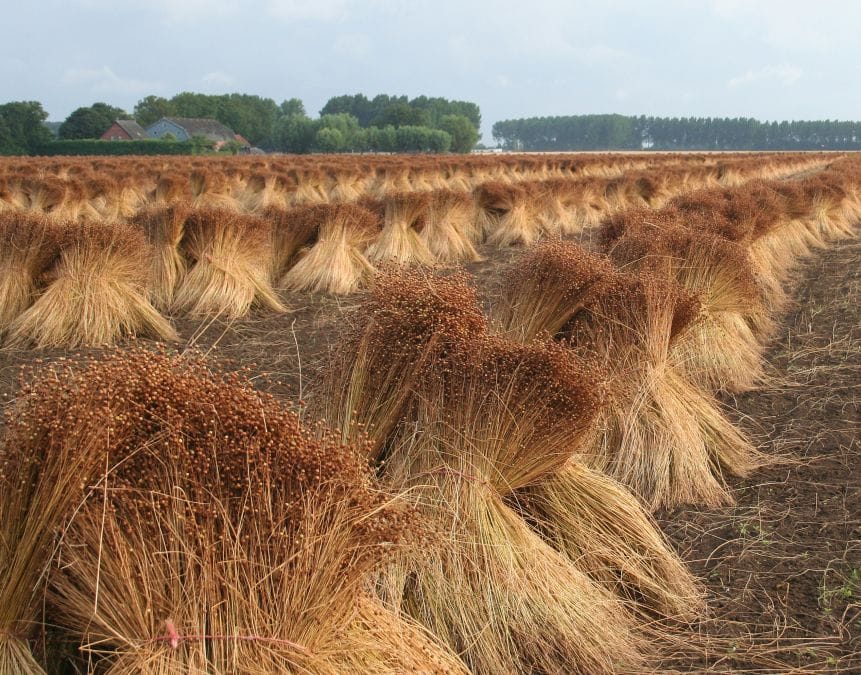
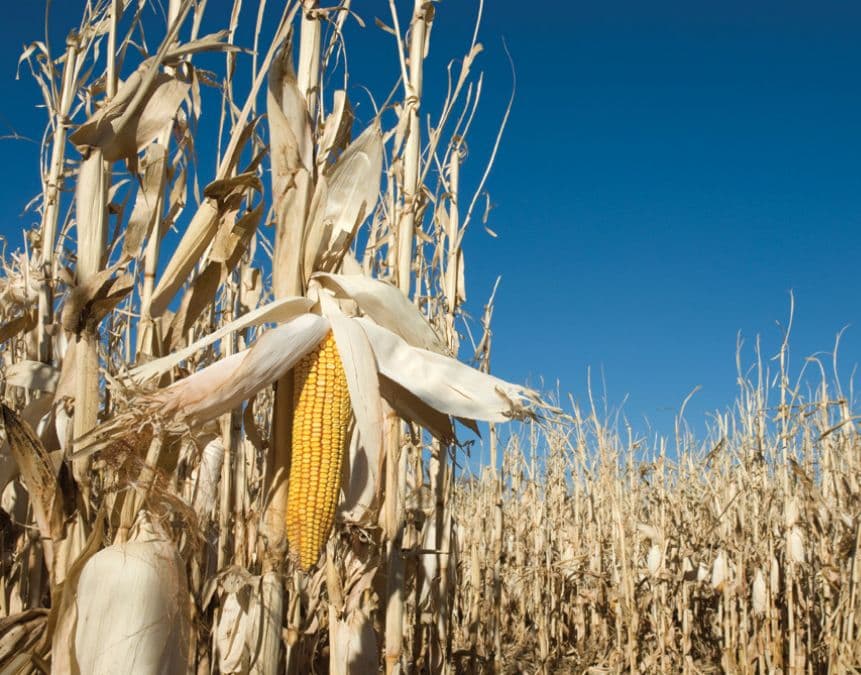
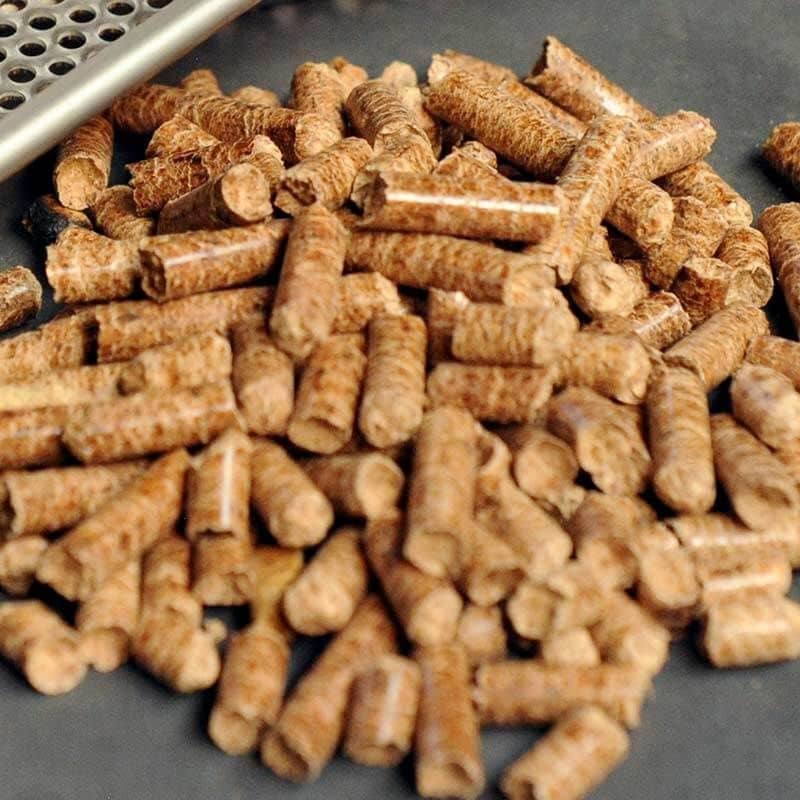
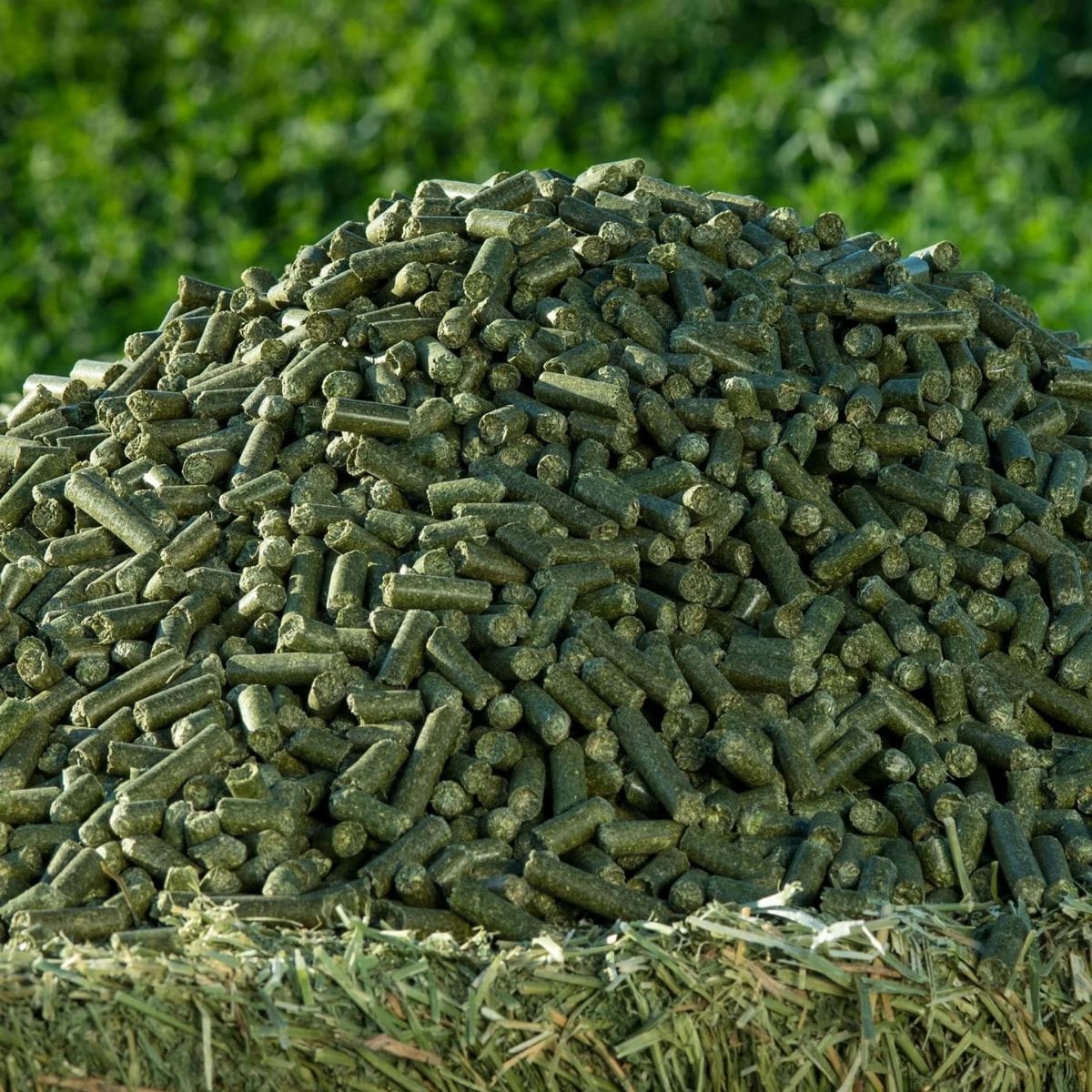
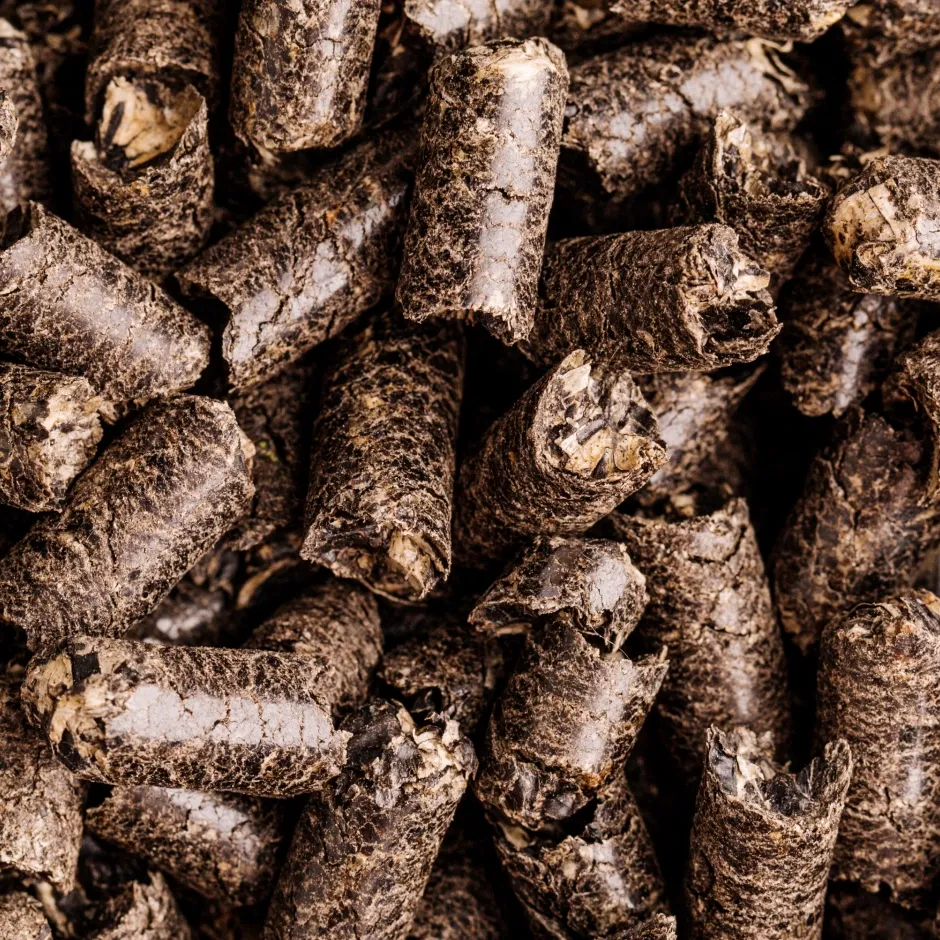
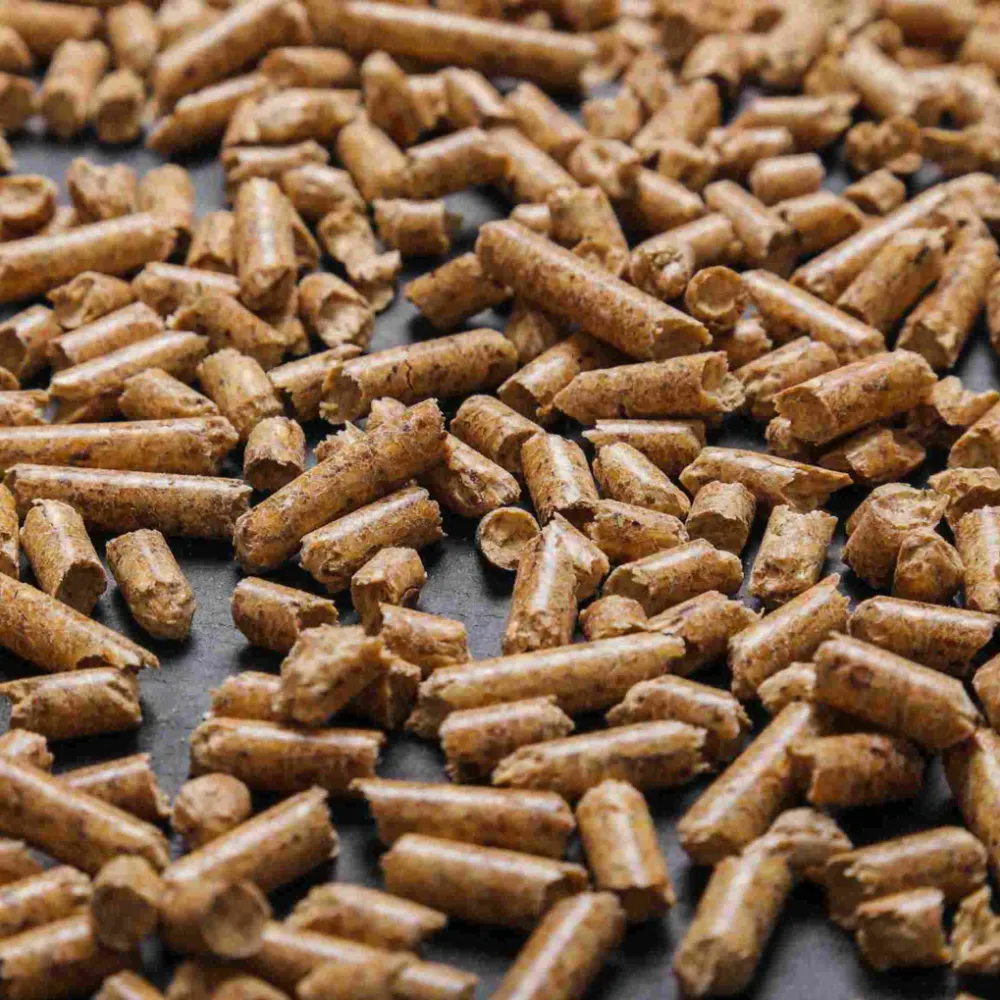
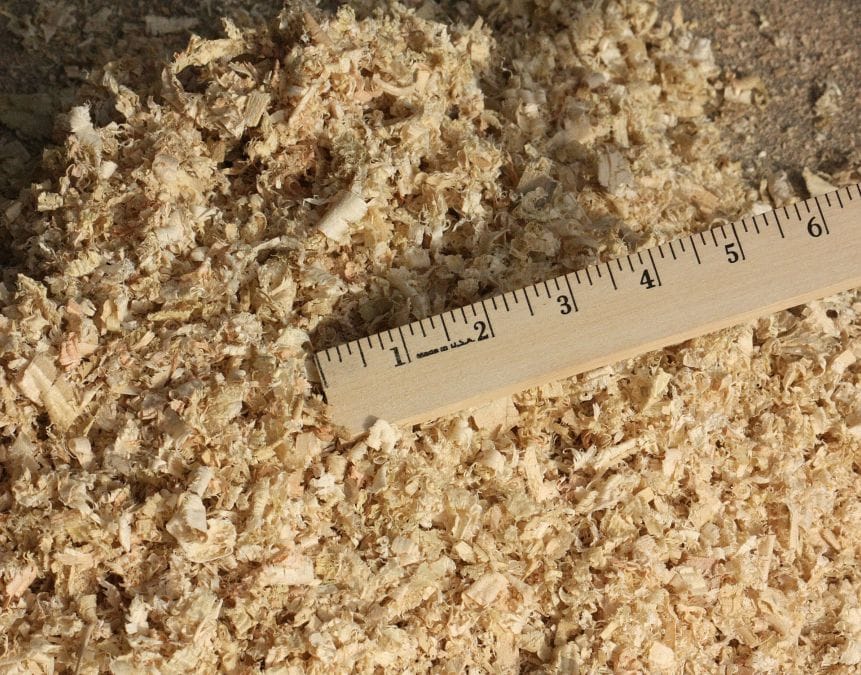
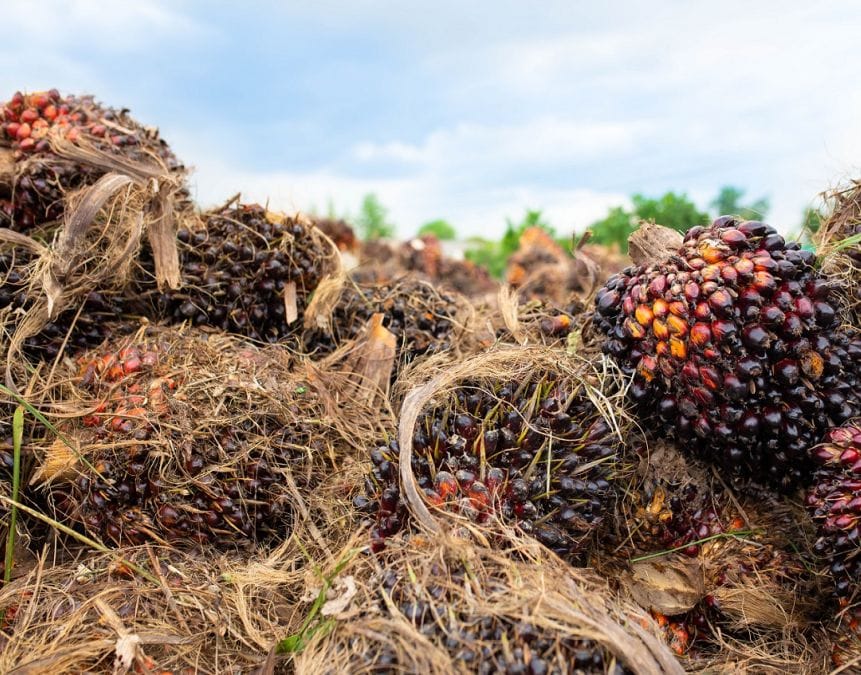
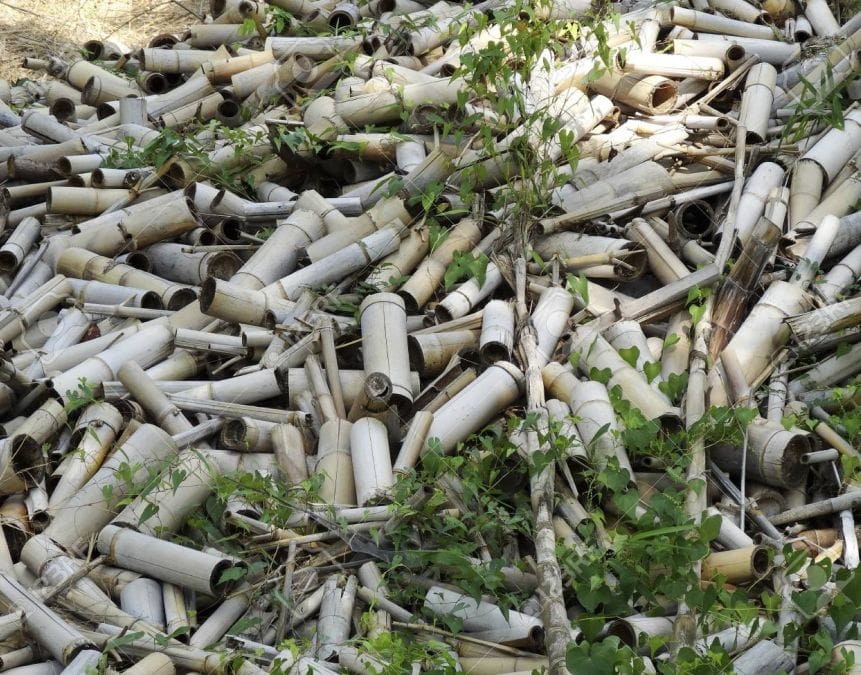
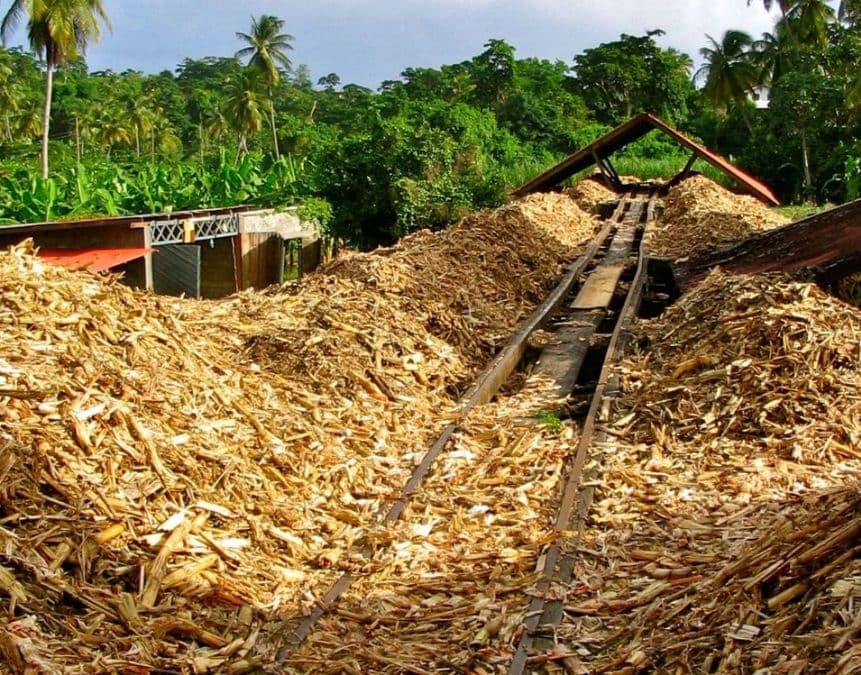

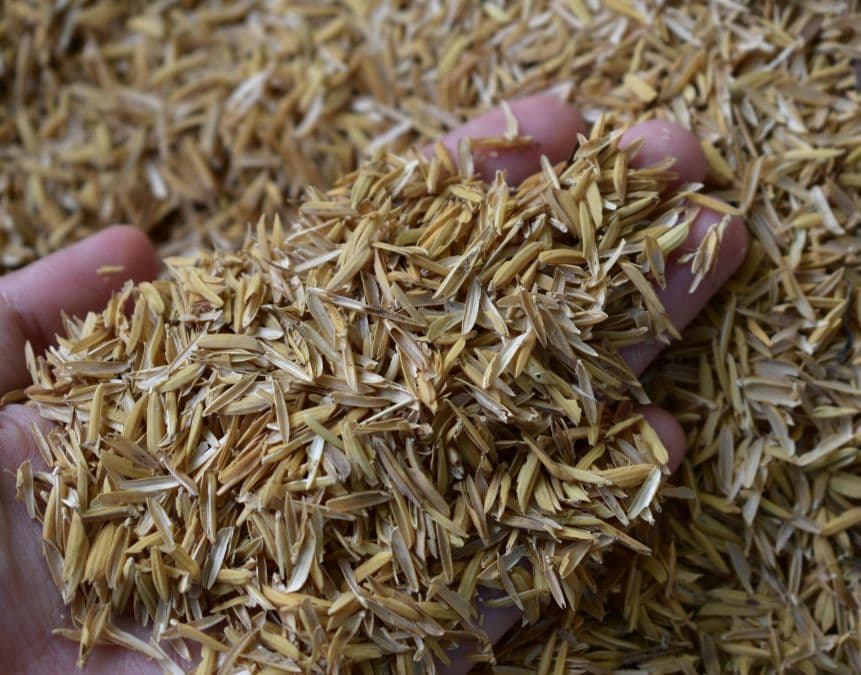
The above are the main process flows of complete biofuel pellet machine plant, and each step requires corresponding equipment and technology to complete.
The purpose of these process flows is to convert biomass raw materials into efficient pellet fuels to replace traditional energy sources such as coal and firewood, and achieve sustainable use of energy.
Auxiliary equipment for biomass fuel pellet machine plant
As a hot green energy product in the current market, biomass pellets can be used to replace coal for heating and power generation. Next, RICHI Machinery will share with you what complete sets of equipment are needed to build a biomass pellet plant and how to choose the corresponding bio fuel machines.
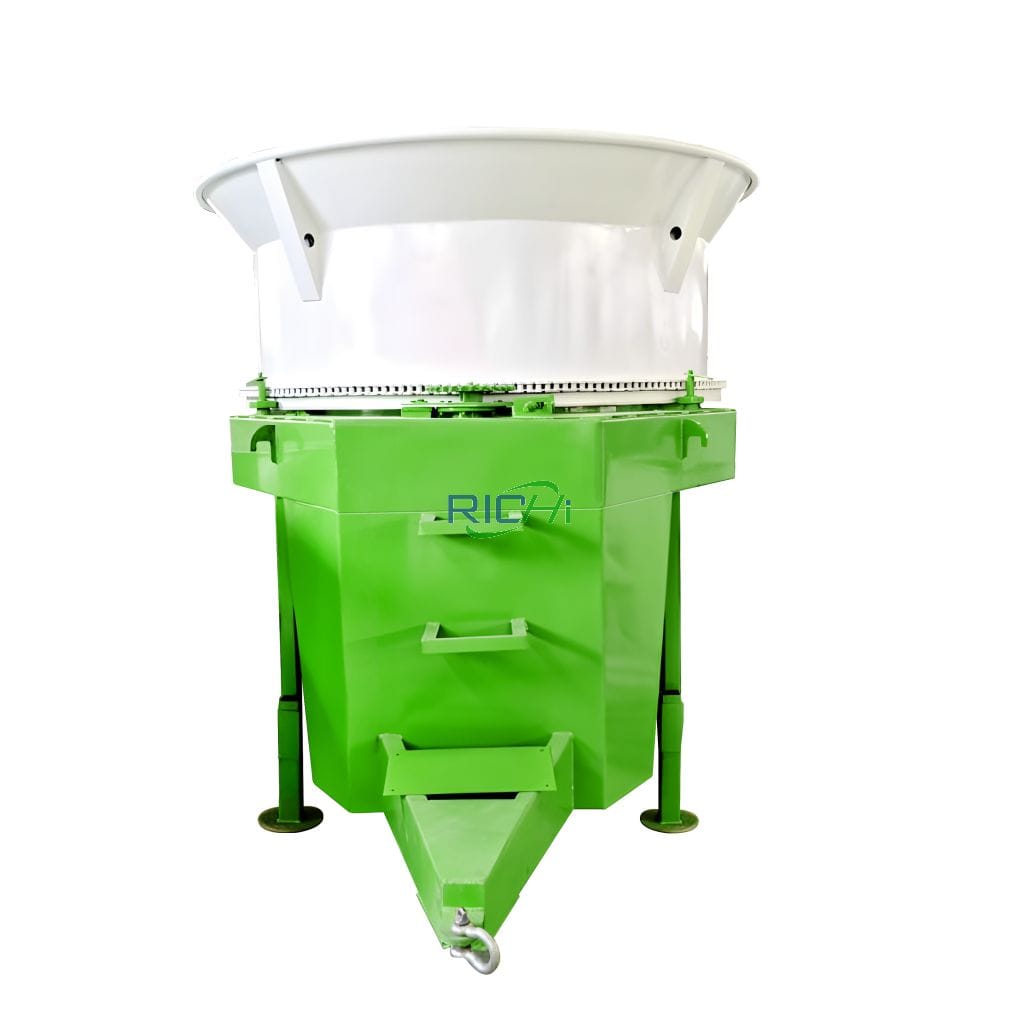
Bale breaker
Capacity:
1-20T/h
Main Power:
30-90KW
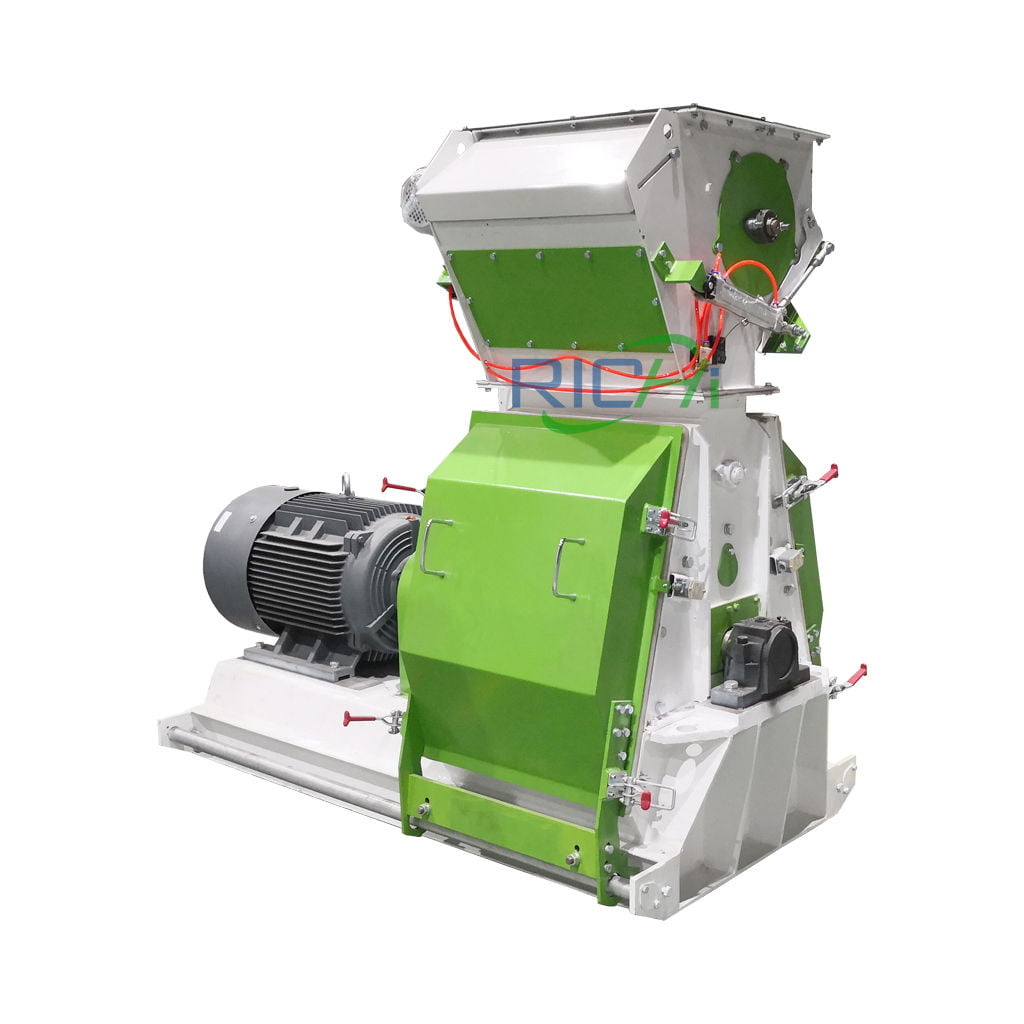
biomass Hammer Mill
Capacity:
2-15T/H
Main Power:
132 KW
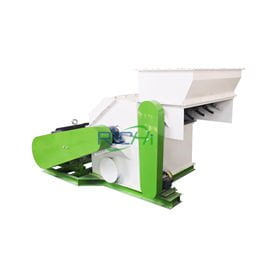
biomass Crusher Machine
Capacity:
0.3-3T/H
Main Power:
22-93KW
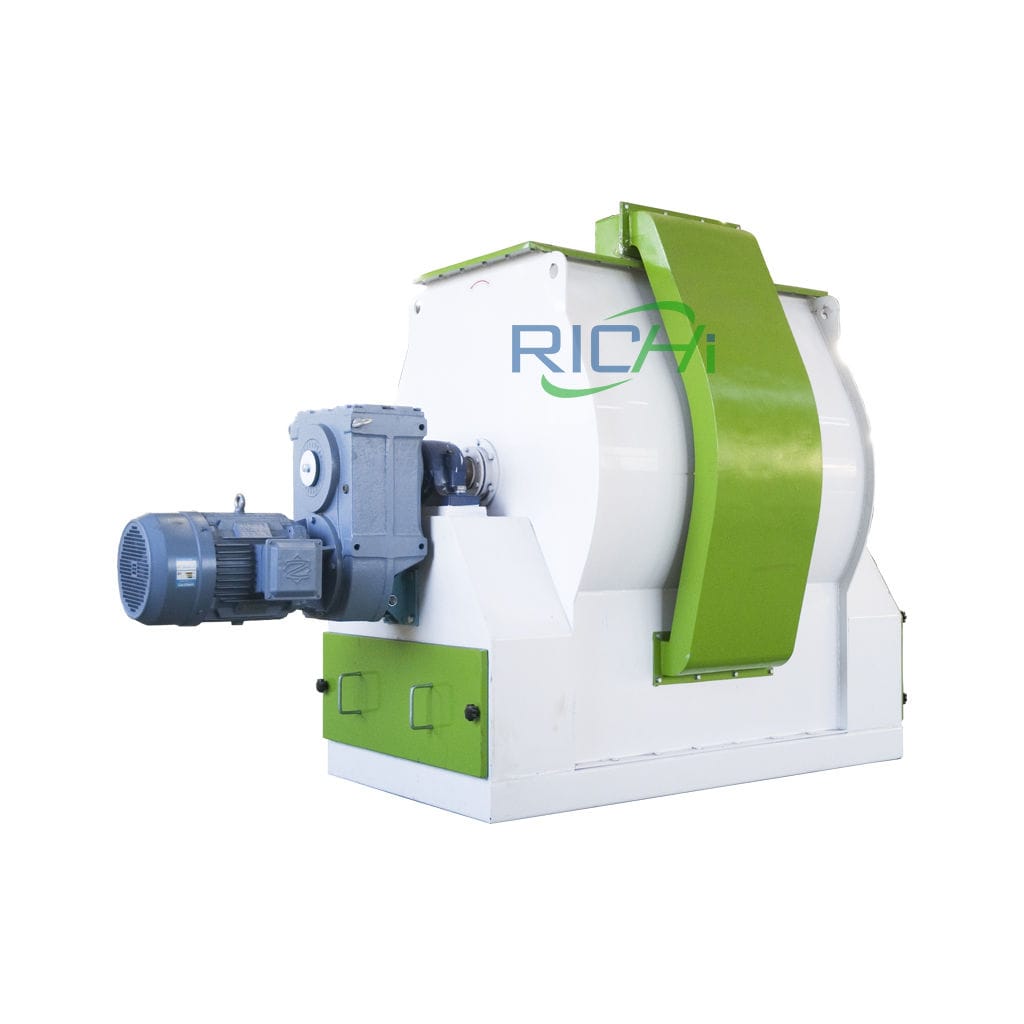
biomass Mixing Machine
Capacity:
250-2000KG
Main Power:
4-55KW
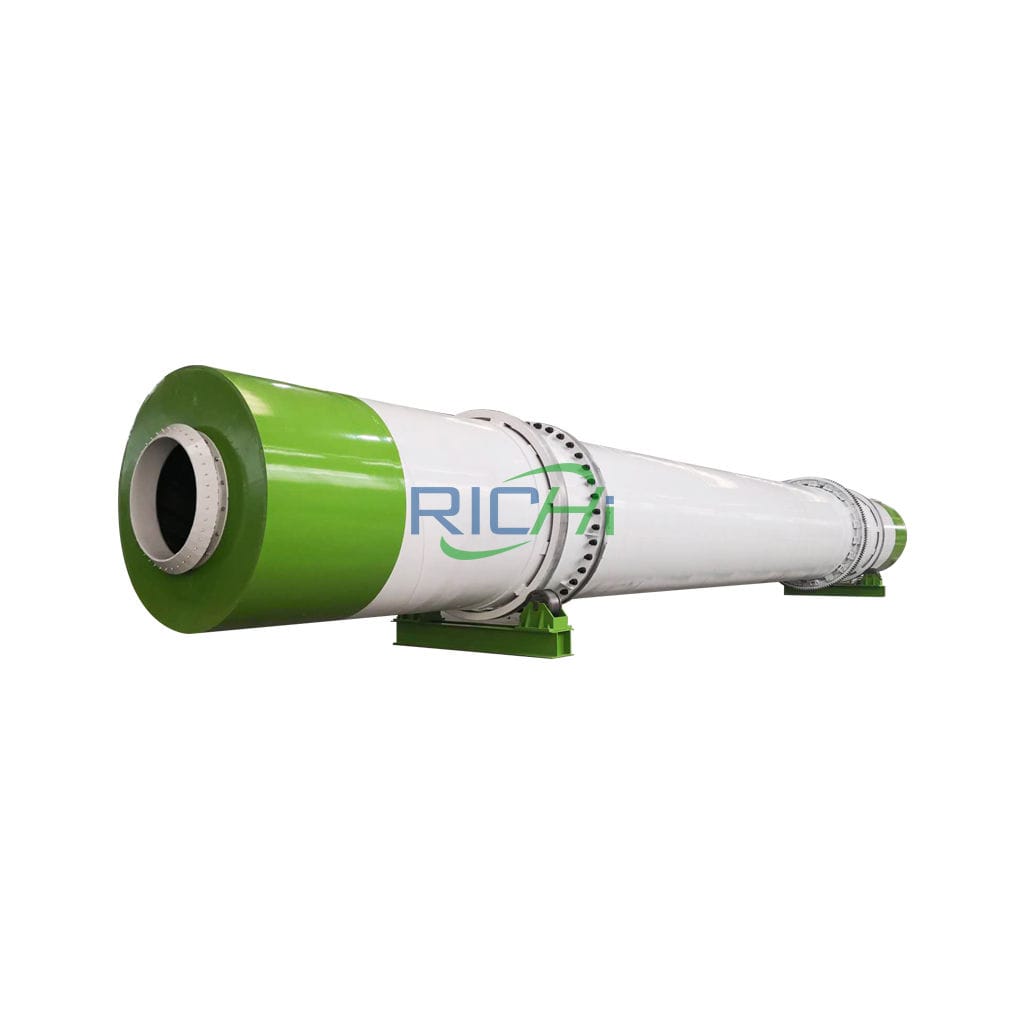
biomass Dryer
Capacity:
Customized
Rotate Speed:
3-8 R/Min
Slicer
The slicer is used to crush and finely crush large wood raw materials. If the raw materials for making biomass pellets are large-volume raw materials such as logs, construction waste, branches, etc., they cannot be directly crushed and pelletized, so they need to be crushed before proceeding to the next process.
(If the size of the raw material is within 15mm, such as wood chips, sawdust, etc., the biomass pellet production line does not need to be equipped with a comprehensive crusher.)
Crusher
The diameter of the crushed biomass raw material is generally around 10-15mm, which cannot meet the optimal pelletizing requirements. At this time, the raw material needs to be crushed. The crusher can crush the crushed material by replacing the screen to make the raw material reach the expected size. Generally, the optimal pelletizing raw material size is within 6mm.
RICHI recommends that the production line with large wood materials as raw materials is equipped with two crushing processes: coarse crushing and fine crushing. This can not only fully crush the raw material, but also reduce the loss of internal parts of the crusher and reduce processing costs.
Drying machine
Biomass pelletizing has certain requirements for the moisture content of the raw material. The vertical pellet machine and the flat die pellet machine have relatively strict requirements for moisture content, which generally need to be controlled within 15%. If the moisture content exceeds 15%, it will affect the pelletizing efficiency, and even blockage or no discharge will occur.
The moisture requirement of the horizontal pellet machine is relatively loose. It is generally recommended to be 15-20% for the best, and pelleting can be done if it does not exceed 30%. If the moisture content of the raw materials entering the factory is high, they need to be dried.
There are many types of drying furnaces. When selecting bio fuel pellet making machine, pay special attention to its efficiency. Since the drying furnace is a high-energy-consuming equipment, RICHI recommends using biomass pellets for heat source, which is much cheaper than electric heating and natural gas heating.
Biomass fuel pellet machine
The processed raw materials are extruded and pelletized by the biofuel pellet mill.
As the most important section of the biomass fuel pellet plant, the operation of the bio pellet machine is simple, but various situations may occur in daily operation, such as uneven discharge, unformed discharge and other raw material adaptation problems, and accessories such as mold roller wear. If you encounter related problems, you can consult the equipment manufacturer for after-sales service in time.
Others
In addition to the above raw material processing equipment, there are some other auxiliary machines: transportation system, silo, dust removal system, vibrating screen, cooling system, finished product warehouse, and packaging system.
This type of equipment is conducive to biomass pellet manufacturing plant management. Usually, equipment manufacturers assist customers in making complete equipment production line solutions to achieve integrated control, reduce production costs, and make the production line run efficiently.
video of biomass fuel pellet machine
FAQs of biomass fuel pellet machine

How much does a MZLH520 biomass fuel pellet machine cost?
The MZLH520 biomass fuel pellet machine price is generally between 40,000 and 60,000 USD FOB.
The price of a biofuel pellet machine varies depending on many factors. Here are some of the main considerations:
- Models and configurations: There are many types of bio pellet machines, including straw pellet machines, wood chip pellet machines, grass pellet machines, alfalfa pellet machines, corn straw pellet machines, cotton straw pellet machines, rice straw pellet machines, miscanthus pellet machines, coal pellet machines, agri pellet machinery, efb pellet machines, bamboo pellet machines, bagasse pellet machines, etc. The price of pellet machines varies according to the model and configuration.
- Brand and capacity: The price of biomass equipment from well-known brands is higher, but the performance is stable and durable. The products of some well-known domestic manufacturers are relatively moderately priced due to cost and market strategies.
- Pelletizing capacity and output: The greater the pelletizing capacity, the higher the complexity and production cost of the equipment. For example, the MZLH858 biomass pellet machine is tens of thousands of dollars more expensive than the MZLH320 biomass fuel pellet machine.
- Materials and wear resistance: Equipment made of high-quality wear-resistant materials will increase costs, but can extend service life, which is generally more economical.
- Functional configuration: Some advanced functions such as automatic control systems will also increase the price of biomass fuel pellet machine.
- Market supply and demand and regional factors: The supply and demand relationship and competition in different regional markets will affect the price.
- After-sales service and accessories: Although perfect after-sales service and long-term supply of accessories will increase costs, they are necessary for maintenance and overall use costs.
Generally speaking, when purchasing a biofuel pellet machine, you need to consider specific needs, budget, expected workload, etc. Consulting professional sales staff or conducting detailed market research are good ways to get accurate prices.

How to choose biomass fuel pellet machine?
Because there are many types and models of bio fuel machines on the market, as for how to choose a biofuel pellet mill, customers who do biomass pellet processing will encounter such a problem. There are many factors to consider when choosing a bio pellet machine, which can be summarized as the following points:
1. Reliability in use
The reliability of equipment use is one of the important factors in evaluating the technical performance of equipment. It is generally required that it can be used continuously for thousands of hours after leaving the factory without mechanical failure. If the operating environment is relatively harsh or the raw materials are very difficult to pelletize, the reliability of the biomass fuel pellet machine becomes more important.
2. Manufacturing process
The manufacturing process is an important prerequisite for ensuring the reliability of equipment use. It reflects and measures the technical and management level of the manufacturer.
3. Productivity
The production efficiency of the equipment is an important control parameter when selecting equipment. Generally, it can determine the upper and lower limits of the production capacity of the biomass fuel pellet machine suitable for the biomass pellet line project.
There is a certain gap between the actual production capacity of the equipment and the theoretical production capacity, which changes with the changes in factors such as the type, hardness, moisture content, and specifications of the raw materials.
The actual production capacity selected should be higher than the average production capacity required by the project to ensure that the production capacity has a certain degree of redundancy.
4. Degree of self-control
The degree of self-control is a basic indicator reflecting the technical level of the equipment itself. The self-control level of the biofuel pellet machine is a concentrated reflection of the technological development level of the entire manufacturing enterprise.
5. Sources and supply channels
When selecting a biomass fuel pellet machine, you should fully demonstrate different sources of goods and carefully choose according to the regional differences in the use environment (such as Asia or Africa, etc.), the degree of market development, the versatility of maintenance parts during construction, and the supply channels.
6. Supply or delivery cycle
In principle, the shorter the supply or delivery cycle, the better. However, for optional or ordered equipment, the manufacturer should be guaranteed to have enough time to produce without affecting the progress of the entire biomass pelletizing plant project, so as to avoid rushing and affecting the quality of equipment manufacturing.
7. Transportation methods and requirements
Different transportation methods have different costs and risks. Whether there are special requirements for transportation also reflects the design level of biomass fuel pellet machine manufacturers.
8. After-sales service
The after-sales service here is a general term, which includes professional technical training, spare parts supply capacity, supply location and price, technical testing, and equipment maintenance.
9. Maintainability
This refers to the accessibility of maintenance and repair, the interchangeability of spare parts, and error-proof design for maintenance.
During the implementation process, in order to improve the utilization rate of machinery, it is often required that the failure of biomass fuel pellet machine can be handled on site, which requires that the machinery must be easy to disassemble and assemble, the supply of spare parts must be reliable and interchangeable, and there should be special repair tools for special parts.
10. Parts supply
This item originally belongs to the scope of after-sales service, but it is listed separately due to its importance. The supply of repair parts here not only refers to the supply of spare parts in after-sales service, but also includes the difficulty of obtaining repair parts outside the after-sales service organization.
11. Equipment matching
- Project matching: the applicability of the introduced biofuel pellet machine and the characteristics of the biomass pellet project.
- Machine group matching: the matching degree of the introduced equipment with the existing equipment of the biomass pellet making plant project, such as loaders, dump trucks, etc., and the impact on the matching of existing equipment.
12. Human-machine relationship
- Operational safety: the degree of perfection of the safety protection device of the biomass fuel pellet machine.
- Operational comfort: The biomass fuel pellet machine should have comfortable operating and driving conditions, a wide field of vision and good air conditioning and ventilation equipment.
- Related matching number of people: This indicator reflects the operability and automation of the equipment.
13. Environmental requirements
The degree of environmental pollution is also a general term here, referring to the degree of impact of the installation and operation of the biofuel pellet machine on the surrounding environment, which is mainly reflected in two aspects, namely dust and noise.

How to choose a biomass fuel pellet machine manufacturer?
Selecting a suitable biomass fuel pellet machine manufacturer is crucial to achieving a stable, reliable and continuously operating pelletizing process. Selecting the right manufacturer is a key decision. Here are some guidelines to help you make your choice:
- Define the requirements: First, clarify your pelletizing requirements, including the type of material to be processed, output requirements, biomass pellet product requirements, etc. Make sure you are clear about your specific requirements so that you can better evaluate whether the manufacturer can meet your needs.
- Market research: Conduct market research to find a reliable biofuel pellet machine manufacturer. You can collect information about each manufacturer through Internet searches, industry exhibitions, and reference to other users’ reviews and word of mouth.
- Experience and knowledge: Consider the bio fuel machines manufacturer’s experience and expertise. Understand their experience and technical strength in the field of biomass pellet machines, including their R&D capabilities, technological innovation, product quality, etc.
- References and word of mouth: Understand the evaluation and feedback of other customers. You can get more information through online reviews, customer recommendations or industry forums. This will help you understand the reputation and customer satisfaction of the biofuel pellet mill manufacturer.
- Technical support and after-sales service: Make sure the manufacturer provides comprehensive technical support and after-sales service. This includes support in installation, commissioning, training and maintenance to ensure the normal operation and troubleshooting of the biomass fuel pellet machine.
- Customization capability: If you have special pelletizing needs or specific process requirements, it will be more advantageous to choose a manufacturer that can provide customized solutions. They are able to design and manufacture bio pellet machine that meets specific specifications and requirements according to your needs.
- Price and cost-effectiveness: Consider the price and cost-effectiveness of the biofuel pellet machine. Choose a manufacturer that can provide a good balance in quality, service and price to ensure that you get a good return on your investment.

What is the prospect of processing biomass pellets with biomass fuel pellet machines?
1. Application of biomass pellets in the energy field
Biomass pellets made by biomass fuel pellet machine can be used as a clean and renewable form of energy with inexhaustible contributions, and play an important role in solving global energy and environmental problems. Through various forms of biomass combustion, biomass pellets can be used as energy forms such as power generation, heating, and hot water.
According to market research, the current global annual production of biomass pellets has exceeded 50 million tons, of which more than 50% is used in the field of biomass thermal power, and the rest is used in biomass hot water, industrial vehicles, liquefied petroleum gas and other fields.
At present, biomass pellets have been widely used in Europe, North America and other places, and have gradually become one of the important choices to replace traditional energy.
2. Application of biomass pellets in the chemical industry
Biomass pellets made by biomass fuel pellet machine can be plant fibers or chemical substances extracted from plants, such as plant monosaccharides, lignin and other substances, which can be used to produce chemicals, pharmaceutical products, etc.
For example, lignin in biomass pellets is widely used in the production of a large number of chemical products due to its stable chemical properties, such as dyes, spices, pigments, etc.
3. Application of biomass pellets in the agricultural field
Biomass pellets can also be used as animal feed and organic fertilizer, bringing better benefits to agricultural production. Biomass pellet feed has the advantages of better nutritional content, good palatability and higher production efficiency than other feeds, and is widely used in animal husbandry.
At the same time, biomass pellets can also be used as organic fertilizers to improve soil quality, increase the yield and quality of crops, and provide necessary nutrients and agricultural quality for agricultural production.
4. Application of biomass pellets in the field of building materials
Biomass pellets made by biofuel pellet machine also have broad application prospects in the field of building materials. Traditional building materials such as cement and concrete require high-temperature firing, consume a lot of energy, and produce a lot of waste gas and wastewater during the production process.
Biomass pellets can be compressed and molded at room temperature and pressure, do not produce waste gas and wastewater during the production process, and can consume a lot of agricultural waste and urban garbage. Therefore, the application prospects of biomass pellets in the field of building materials are very broad.
In summary, biomass pellets made by biomass fuel pellet machine have a wide range of application space and market demand in the fields of energy, agriculture, chemical industry and agriculture.
In the future, with the improvement of environmental awareness and the emphasis on the promotion of renewable energy, the market prospects of biomass pellets will be better. (Find RICHI on youtube)
